A Photogenic Coastal Road Trip in Portugal
The Portuguese wild Atlantic coast is an ideal destination for epic photography and a scenic road trip. Stretching for 832 km of coastline with dramatic views, rugged cliffs and remote beaches – natural beauty just waiting for your creative vision. Dreamy fishing villages, cosy towns, and two vibrant cities complement nature and landscape photography opportunities with street scenes, architecture and sports. The creative arts and surfing culture offer plenty of options, both to participate and get active or to watch and photograph.
As most of the Portuguese coast is situated on the west coast of the Iberian Peninsula, you can sleep in most mornings without regrets and enjoy stunning sunsets at your photography locations instead. A photographer’s dream?!
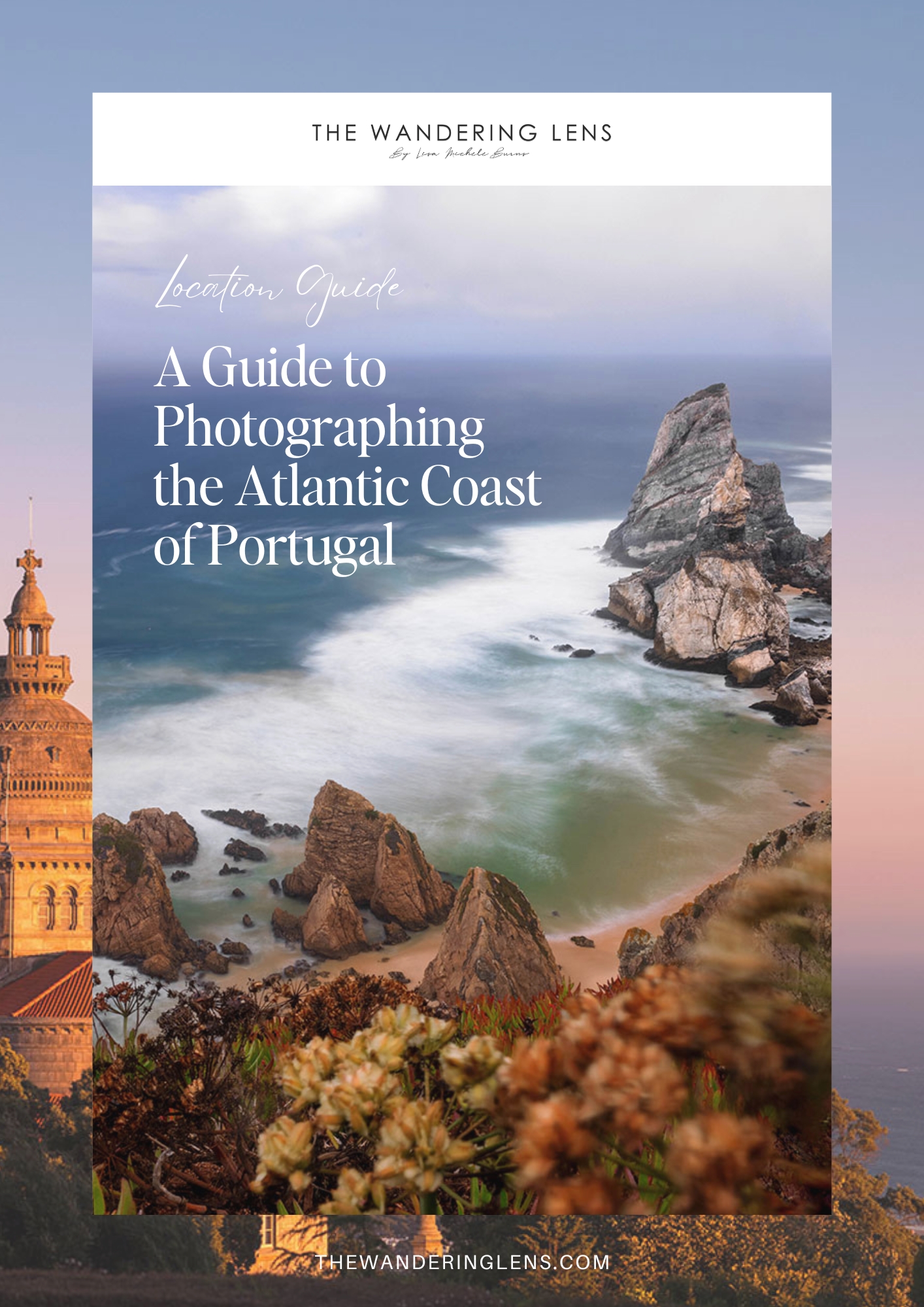
*This guide was written and photographed by Julie Baaske, a contributor of The Wandering Lens who spent a lot of time exploring and discovering the city of Porto with her camera. I hope you enjoy her insights as much as I do!
To make the most of your road trip, I can highly recommend travelling by van when photographing the Atlantic Coast of Portugal. As a passionate van traveller myself I can assure you it will add an adventurous element to your trip, with the flexibility to reach your chosen destinations without sticking to a set schedule and the chance to chase the best weather conditions. There are several companies offering camper vans for rent and I must note that wild camping is forbidden all over Portugal, so researching where the best sites are will make for a smoother trip. If you take the van route, it’s growing in popularity so it’s important to behave responsibly and leave no trace at each stop.
Tip: If you are renting a camper van for the first time, consider how to charge your camera batteries and additional gear like laptops and phones. Most camper vans will have 12V only and a limited amount of electricity when not plugged in at a campsite, so it’s best to also look into portable charging devices.
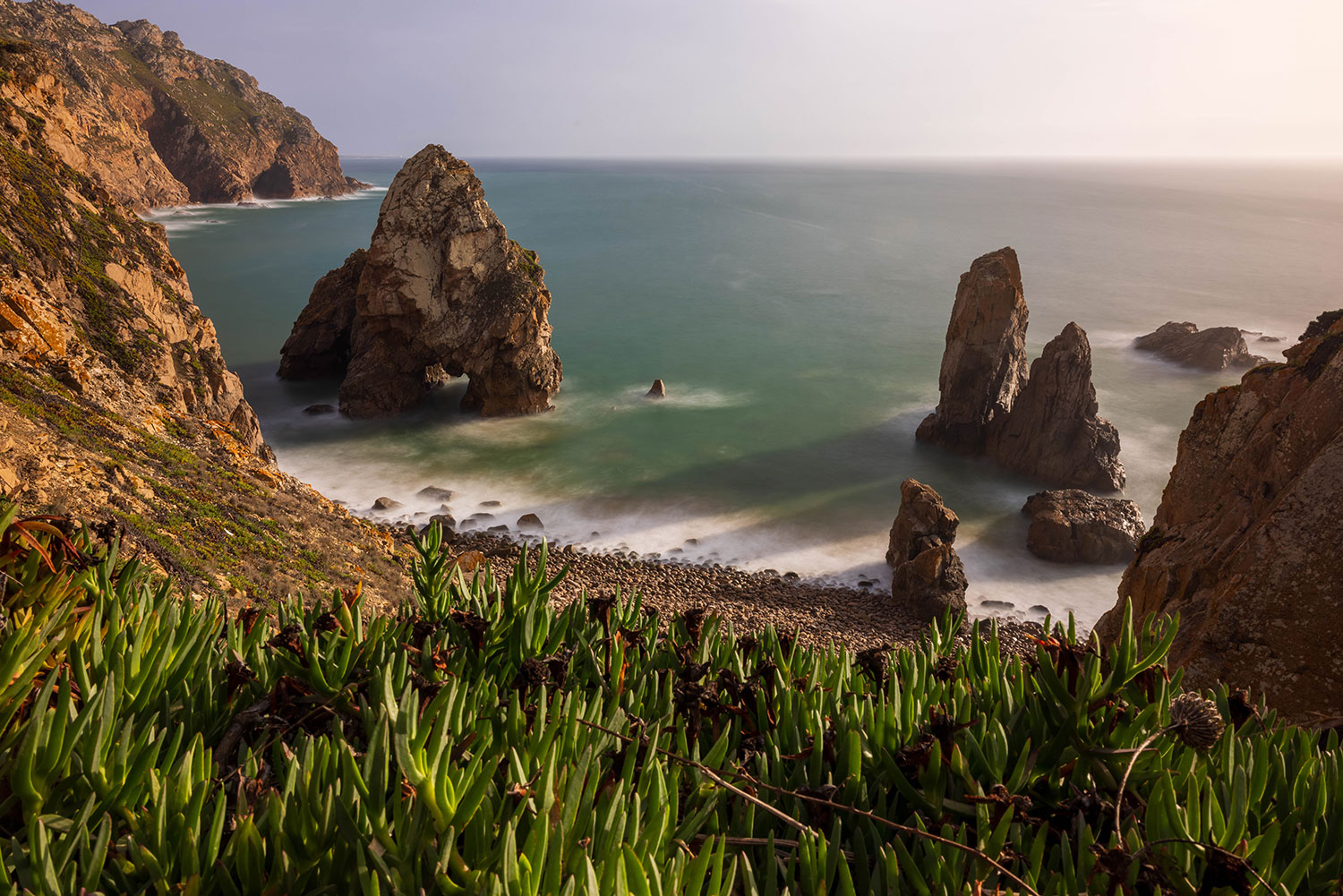
When to visit Atlantic Coast of Portugal?
Every season is different on Portugal’s Atlantic Coast. Road tripping will be most comfortable around summer, with a warm climate and little rain. It is however, also the most popular holiday season, with some very busy areas and dry vegetation in others. If you’re easily affected by heat, July and August should maybe be avoided, although there is always some freshness from the Atlantic Ocean since you’re on the coast. Spring is beautiful, with a flower-covered coastline, cooler conditions than summer and bird migration. In autumn, birds can be seen on their way back to Africa. It can still be pleasantly warm and less crowded. Winter months see the ocean put on a show, you may have heard of Nazaré and its enormous waves?
Generally, mornings tend to be humid at the Atlantic Ocean. Even in summer. The fog can be as thick as mud and more times than not I have been waiting for the first light of day watching clouds rolling in and sucking it all up instead. Another reason why the best chances for exceptional light conditions for photography are towards summer evenings.
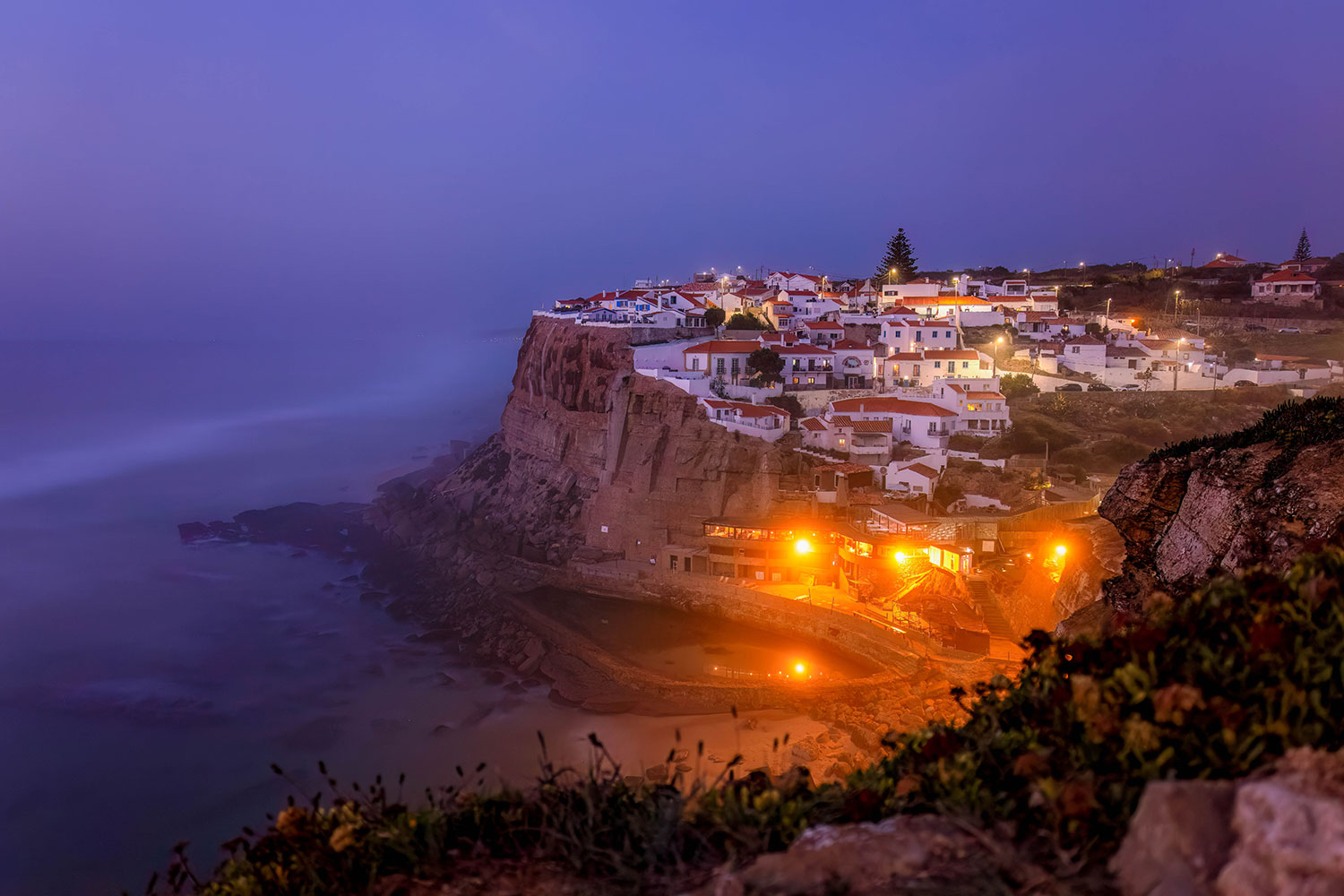
Portugal’s Atlantic Coast Photography Locations
The following location recommendations are based on my time travelling and exploring this country and while it doesn’t cover everywhere, it leaves a little room for you to go on your own treasure hunt and find other amazing spots. You will find my favourite photography locations noted below with imagery I captured and a clickable map below. Enjoy!
1. Viana Do Castelo
Starting in the north of the Portuguese coastline, just about 25 km south of the border with Spain, Viana Do Castelo will welcome you without the crowds. It is mainly famous for wind- and water sports that are practised on a huge sandy beach south of the city and Lima river. Opt for some sports photography and chilled drinks in one of the beach bars there if you like.
Over the “Eiffel bridge“ (yes, same Gustave Eiffel responsible for the Parisian Eiffel Tower) the charming city centre consists of wonderful paved little alleys, sprinkled with local life, historic architecture and a modern touch of lovely urban street-art that is retelling traditional stories.
Majestically overlooking Viana, the river-mouth and the vast Atlantic Ocean stands the iconic Santuario do Sagrado Coração de Jesus – Sanctuary of the Sacred Heart of Jesus or, more simple, the Santuario Santa Luzia. For panoramic views and imagery you can get up the Santa Luzia hill with a funicular, by car or on foot. There is a panoramic platform on top of the sanctuary, accessible through some very narrow stairs if you are not claustrophobic. If you want to include the sanctuary in your panoramic shots, you will need to get up further up the hill. It is worth it.
Depending on the season, the Atlantic morning mist can ruin or help (depending on how thick it is) for some moody imagery and get your camera wet. I preferred this location right after sunset, when the sanctuary will be illuminated. I would suggest bringing a tripod for long exposures.
Additional Reading + Planning: A Guide to Photography Locations in Porto, Portugal
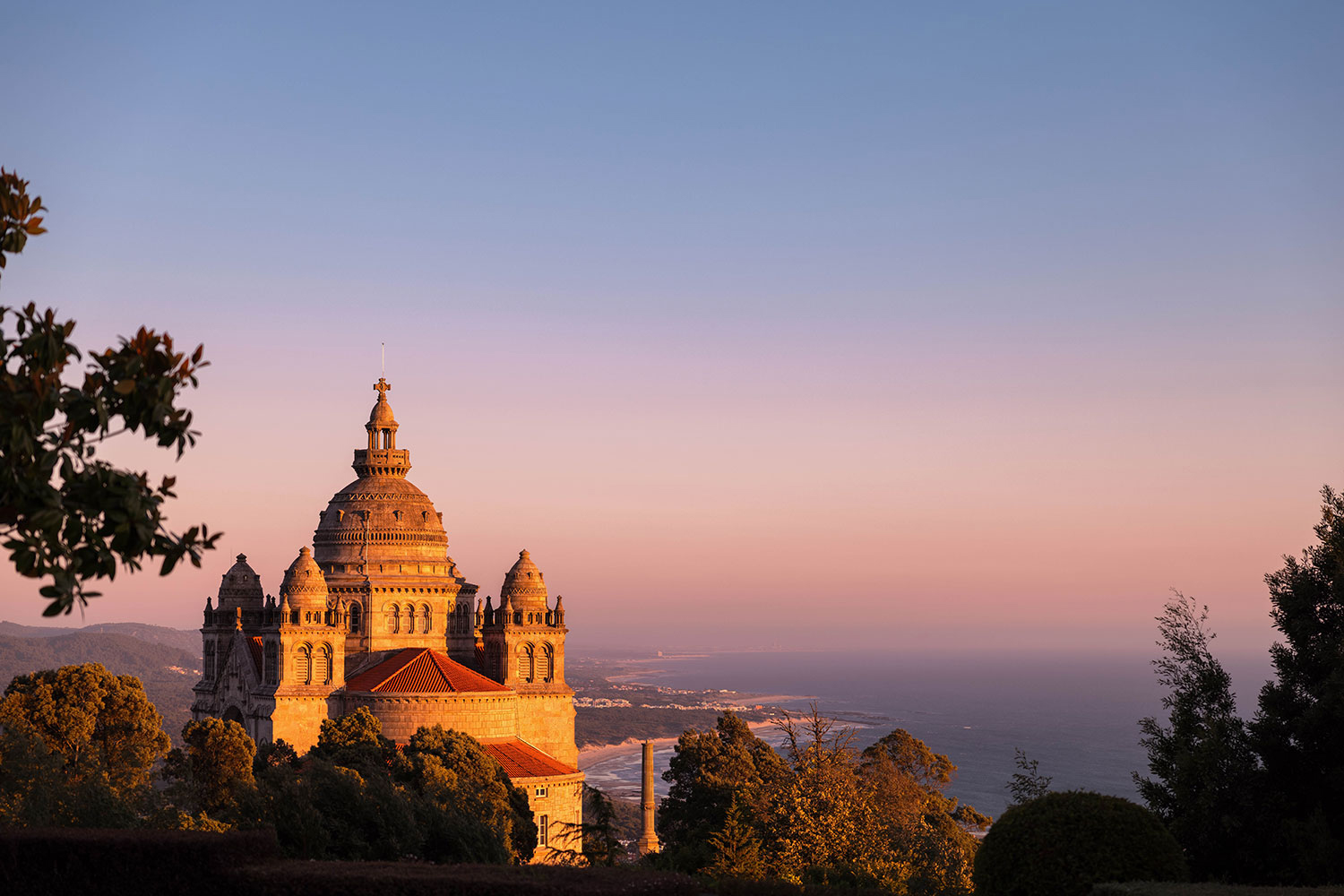
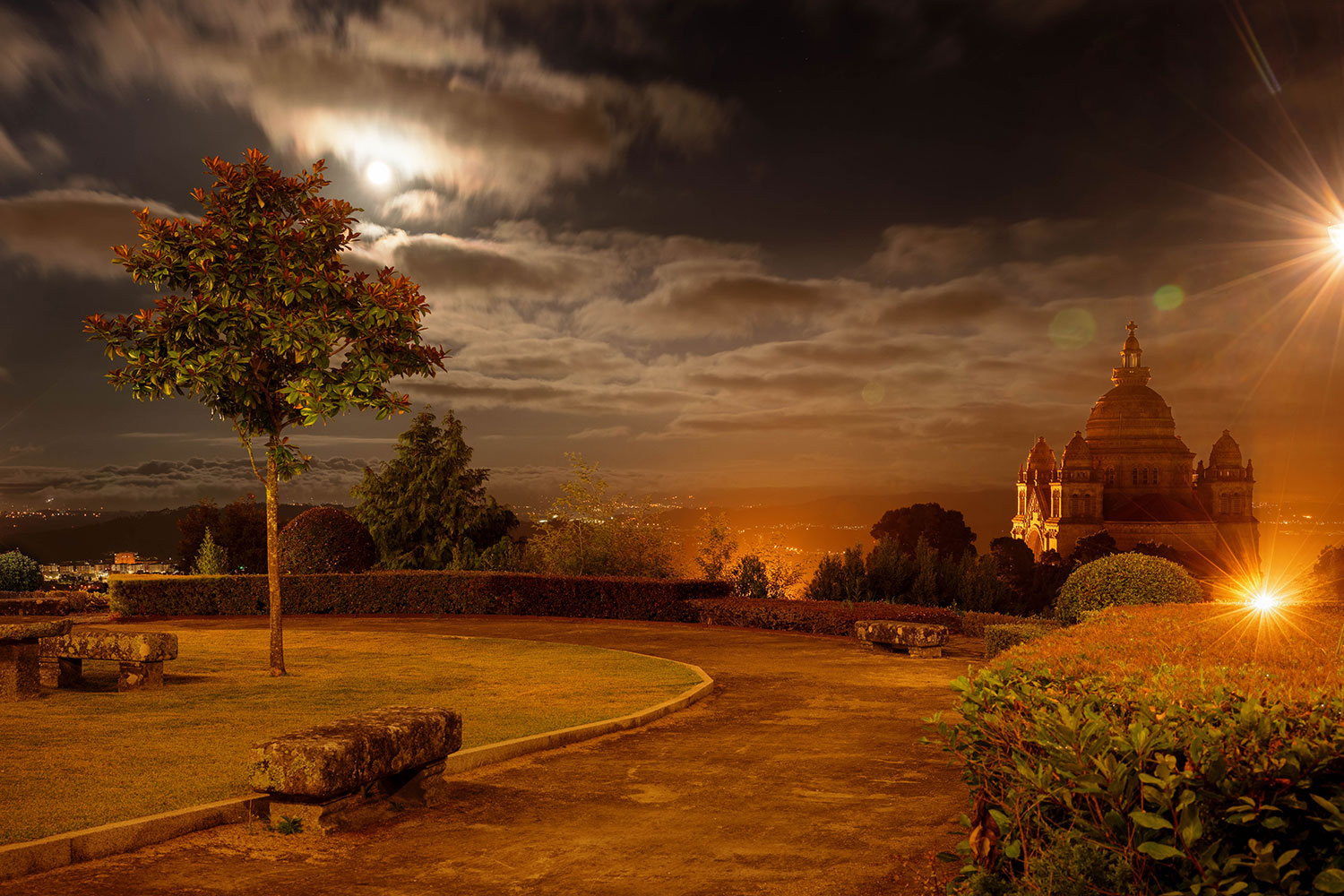
2. Capela do Senhor da Pedra – Chapel of the Lord of the Stone
Next stop down south is for sure one on the top of my favourite. While I am not a general fan of churches, chapels and other religious monuments, this quite subtle building is so amazingly photogenic just because it sits in a perfect location. The chapel of Senhor da Pedra from the 18th century is located on Praia da Miramar, just south of Porto (you can actually go there from Porto within 20 min by public transport should you wish to).
Its hexagonal plan is perched on some rocks in-between sand and the ocean: the perfect stage! Depending on the tide, the beach will be covered more or less. In rare conditions (that I did not have) the Lord of the Stone would be completely surrounded by water. Aim for an autumn or winter visit, check tide charts and cross your fingers if you don’t want to miss that. I timed my summer to early autumn visits for when sunset coincided with high tide for most water and waves included in my imagery.
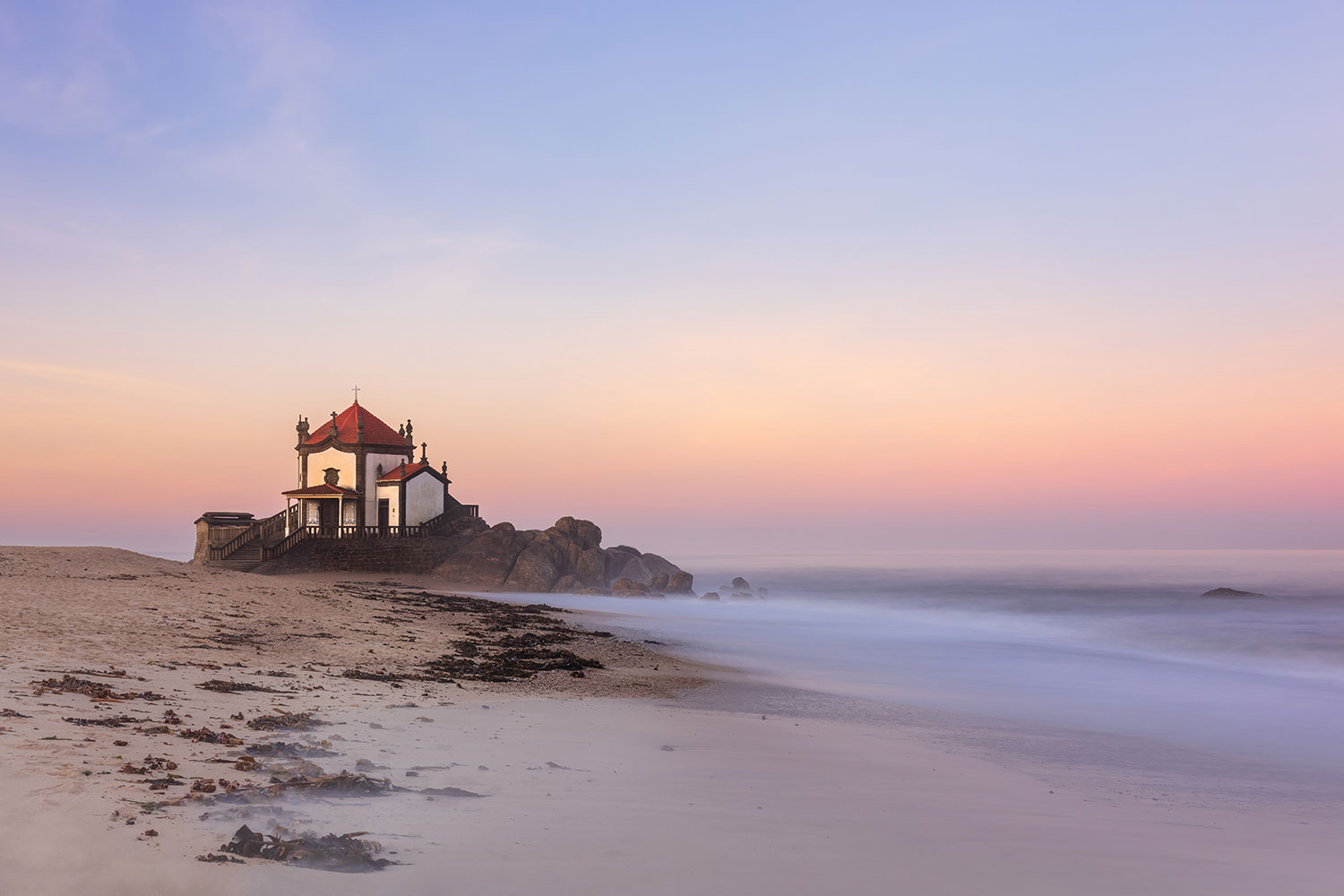
I have tried all kinds of perspectives and light situations throughout night and day, and – surprise, surprise – liked sunsets most. Well, the chapel is sitting on the Portuguese west coast, meaning, that the sun will meet the ocean at the horizon somewhere behind the building while you are photographing from the beach. While it might be challenging to shoot with the sun blasting right into your lens, the magic happens when it just disappeared and again when the illumination of the chapel switched on. Sunrise can be interesting as well though, with the first rays of sun on the facade of the chapel that is facing you and this glowy pastel coloured background typical for this time of a day. I also got some satisfying shots during the day, but keep into consideration that the beach can get packed then and people are roaming around the building for selfies. I got some severely frozen feet each and every time I took photos here, as the Atlantic – even in summer – does not classify as “warm”. But I strongly recommend you to be prepared to go into the water for more flexibility and perspectives.
My camera and tripod got splashed with salt water a couple of times here as well. I cannot recommend that, but I risk it sometimes for my own gear. Before you do: Make sure your camera and lens are somewhat weather-sealed, bring a rain-cover to protect your camera and use a carbon tripod that can survive in salt water best. Shoot with your camera live view display instead of your eye pressed against the view finder, if you can. You will be able to see the waves coming in and raise your chances of getting your camera out of their way. It is best having a towel with you to dry off splashes of water immediately before they could find their way inside. After your session, rinse your tripod thoroughly with fresh water, take it apart if necessary to completely remove salt and sand, and let it dry before reassembly. Swipe your camera and lenses carefully with a damp towel and – most important – let it dry!!! Never wrap or store away a wet or damp camera or lens.
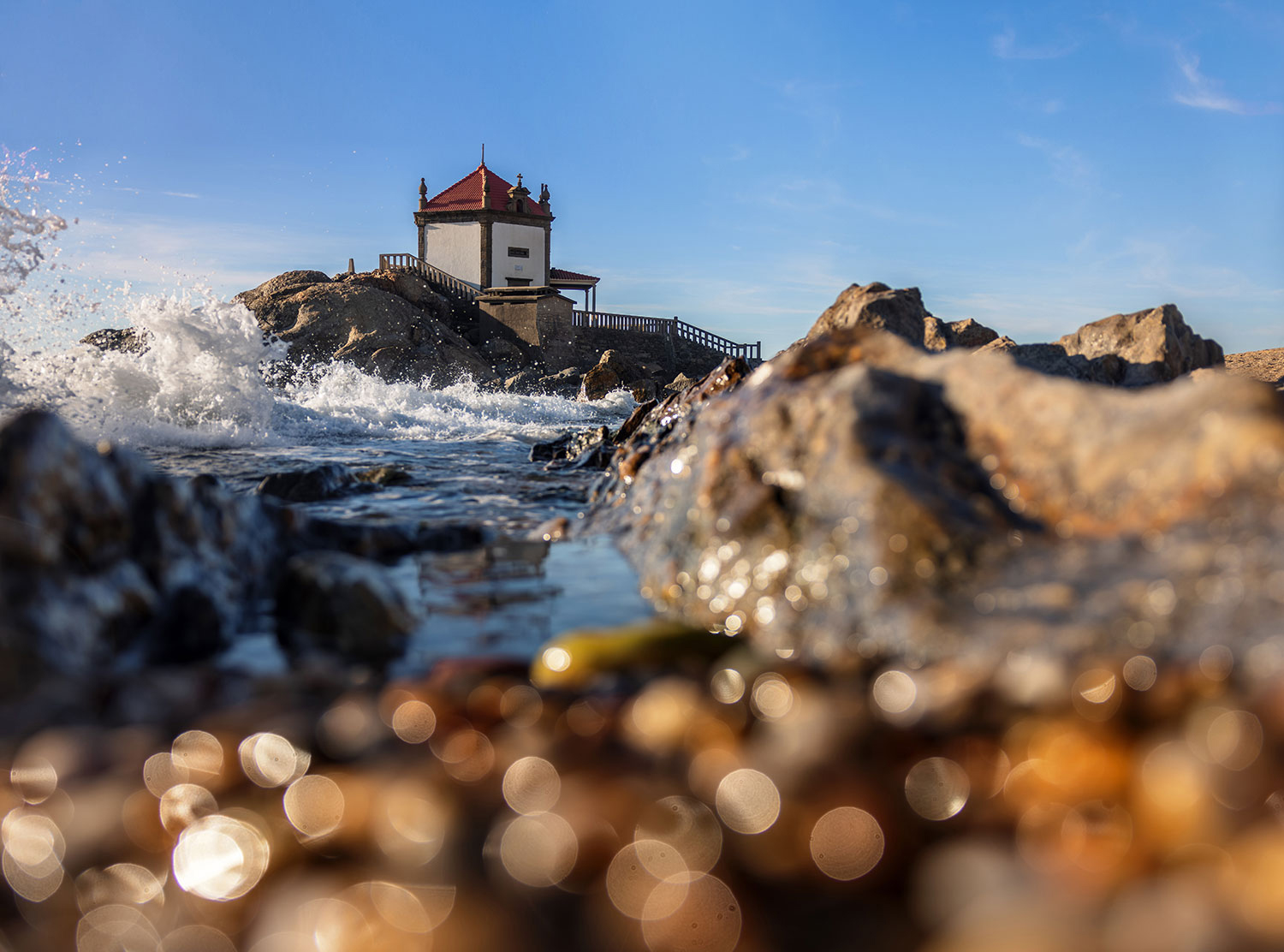
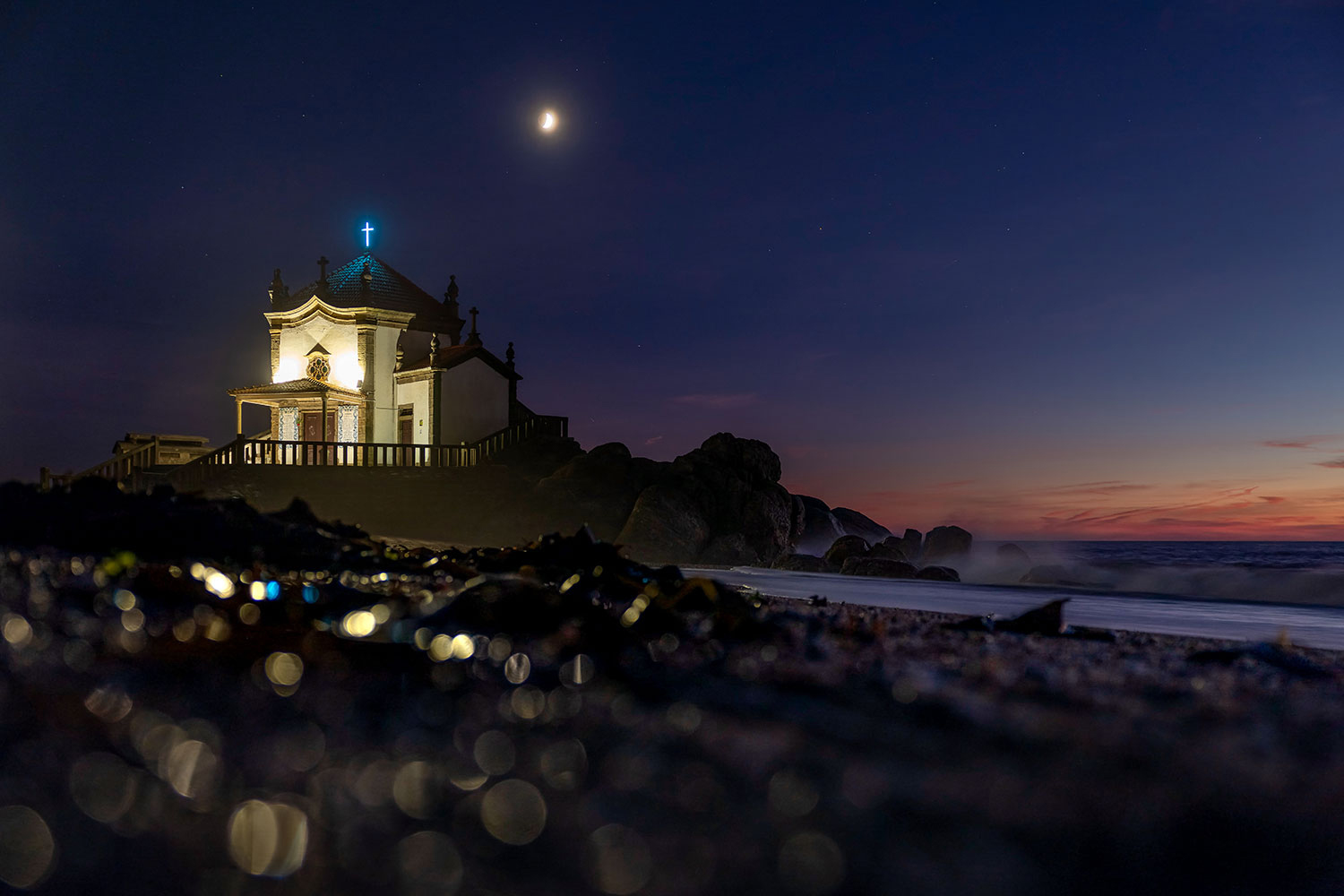
3. Aveiro + Costa Nova do Prado
Aveiro is a charming little town that I recommend – especially, but not only – if you found Porto too much, too busy, too overwhelming. You will also find Azulejo tile and colourfully painted buildings here, some canals instead of a river and no “Rabelo” but brightly painted “Moliceiro” boats – colourfully painted wooden boats that once used to collect seaweed in the nearby lagoons and are transporting tourists nowadays.
Azulejos can be found on the old train station “Antiga Estação da CP” and “Casa de Santa Zita”. You will also find beautiful Art Nouveau style buildings throughout the city and an Art Nouveau Museum called “Museo de Arte Nova”.
Aveiro is not super big, but it makes a unique location for your photography in a pleasantly calm and relaxed way. A visit can be combined with a visit to Costa Nova do Prado which is situated right outside Aveiro between the Atlantic Ocean and the lagoon. It is famous for its sandy beaches and colourful striped houses.
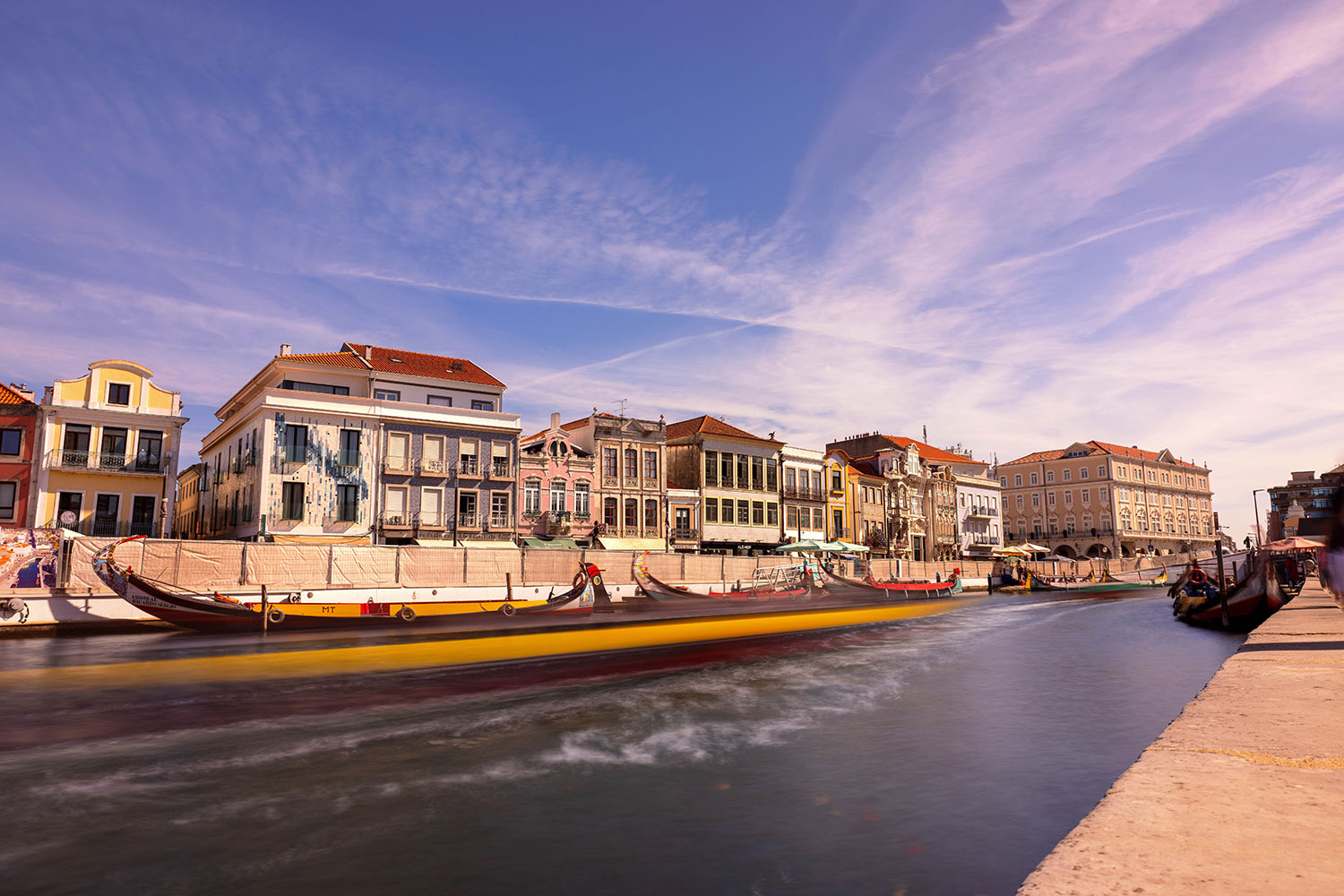
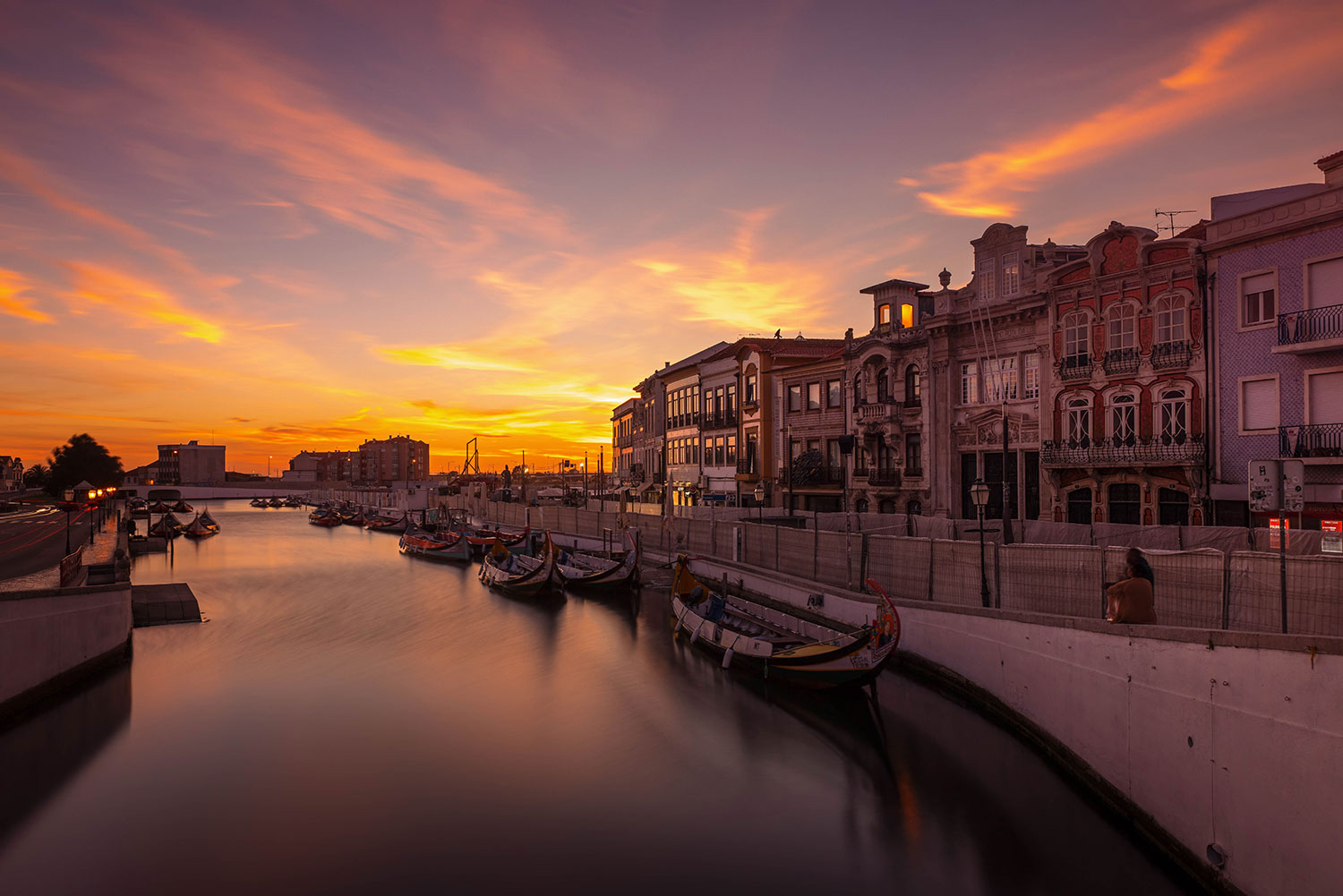
4. Peniche + Berlengas
Peniche geographical position being a peninsular out in the Atlantic and very popular with surfers from all over the world promised good photography locations to me. You can for sure photograph nice sunsets from Praia Baleal Sul with Peniche or Baleal in the background or the cliffs and interestingly shaped rock formations of Cabo Carvoeiro and visit to enjoy the sandy beaches and a surf. But you would be missing a gem if you would not take a boat trip out to the Nature Reserve of Berlengas!
Berlengas is a small Island around 10 km into the Atlantic Ocean. You will arrive within app. 45 min at the harbour and village of the archipelago with about a dozen fishermen houses and two bars. From there you will be able to walk any of the well signed paths to explore the island or buy any of the boat trips and kayak adventures on offer.
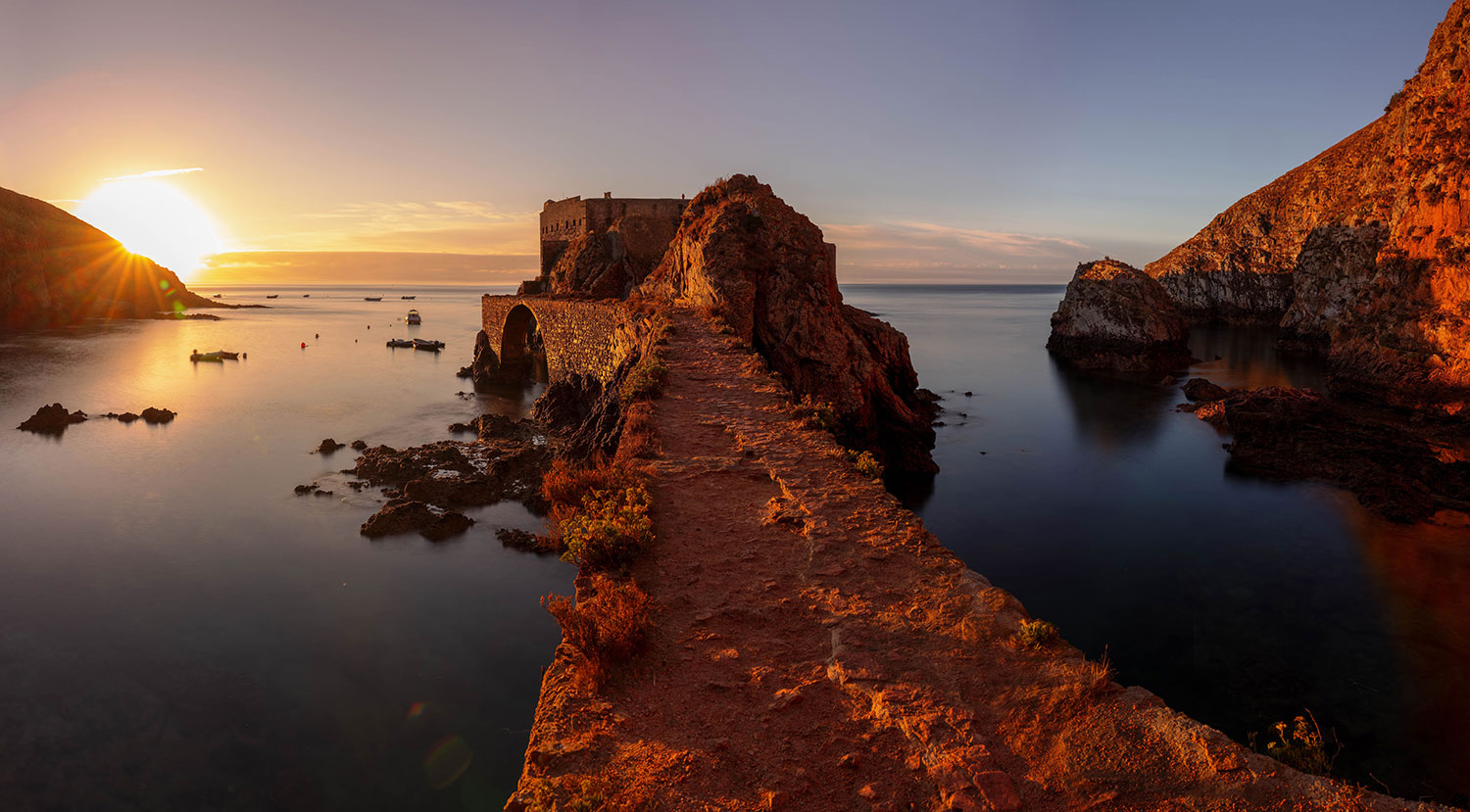
Berlengas is home and nesting area to some seabirds. It is very bare and dry in summer but supposed to be full of flowers in spring. The star of the island is the Fortress of St. John the Baptist – Forte de São João Baptista. It is an absolute beauty to photograph throughout the earlier day until the sinking sun will cast the shadow of the island onto the fortress. The midday sun will illuminate the emerald water best (I recommend bringing a polarisation filter), but you will also have to deal with most visitors that spend the day on the island between around 10 am and 17 pm. This is one of the rare locations in this guide, where the magic happens at sunrise! To experience the early morning light at this location and without the crowds, you will need to spend the night on Berlengas. Currently, there are three options which you will have to book in advance: you can camp at the only campsite just above the harbour and fishing village, check into the one and only bead and breakfast there or – best option and strong recommendation from my side: spend the night directly at the fortress itself!
Please understand, that the fortress is not a regular hotel. It is run by an association of friends of the island, which you will support with your stay. You will be offered a simple room, shared bathrooms with cold water, access to a communal kitchen and dining room and a bar for coffee and drinks. You will have to bring your own bedding, towels and food to cater yourself. I loved the experience! I have spent 27 hours on this island, which was a bit stressful. I would have wished for an extended stay.
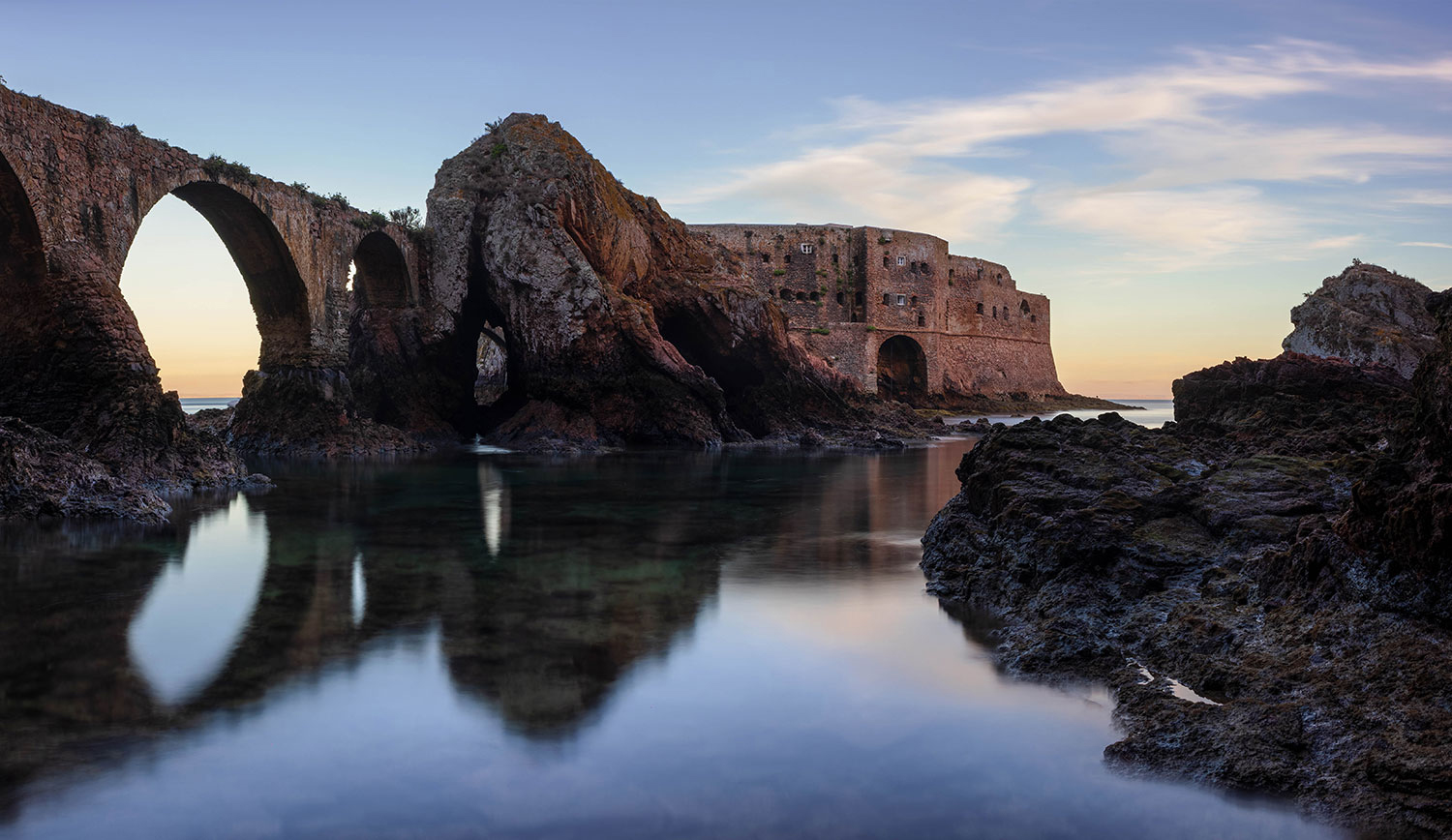
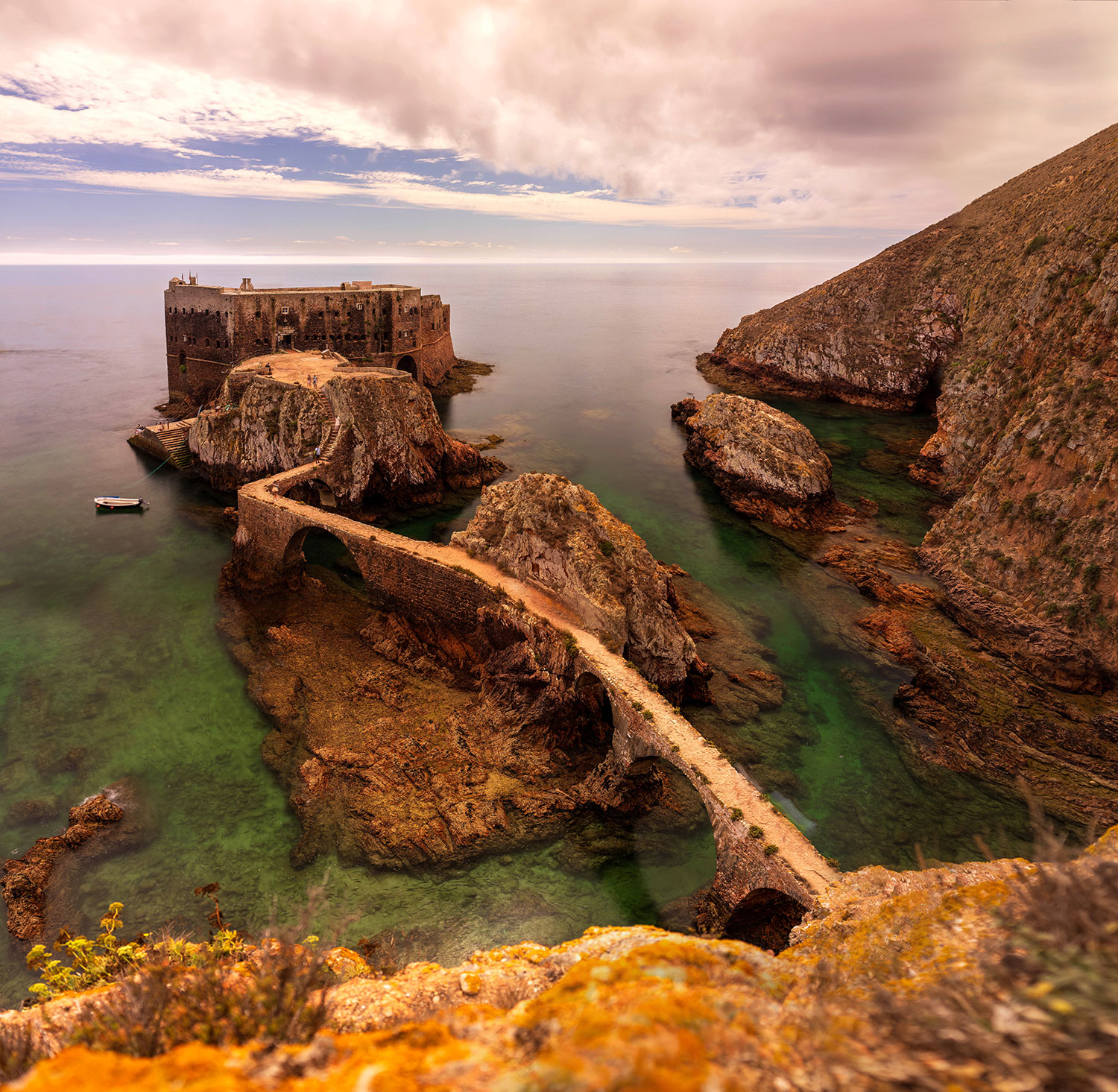
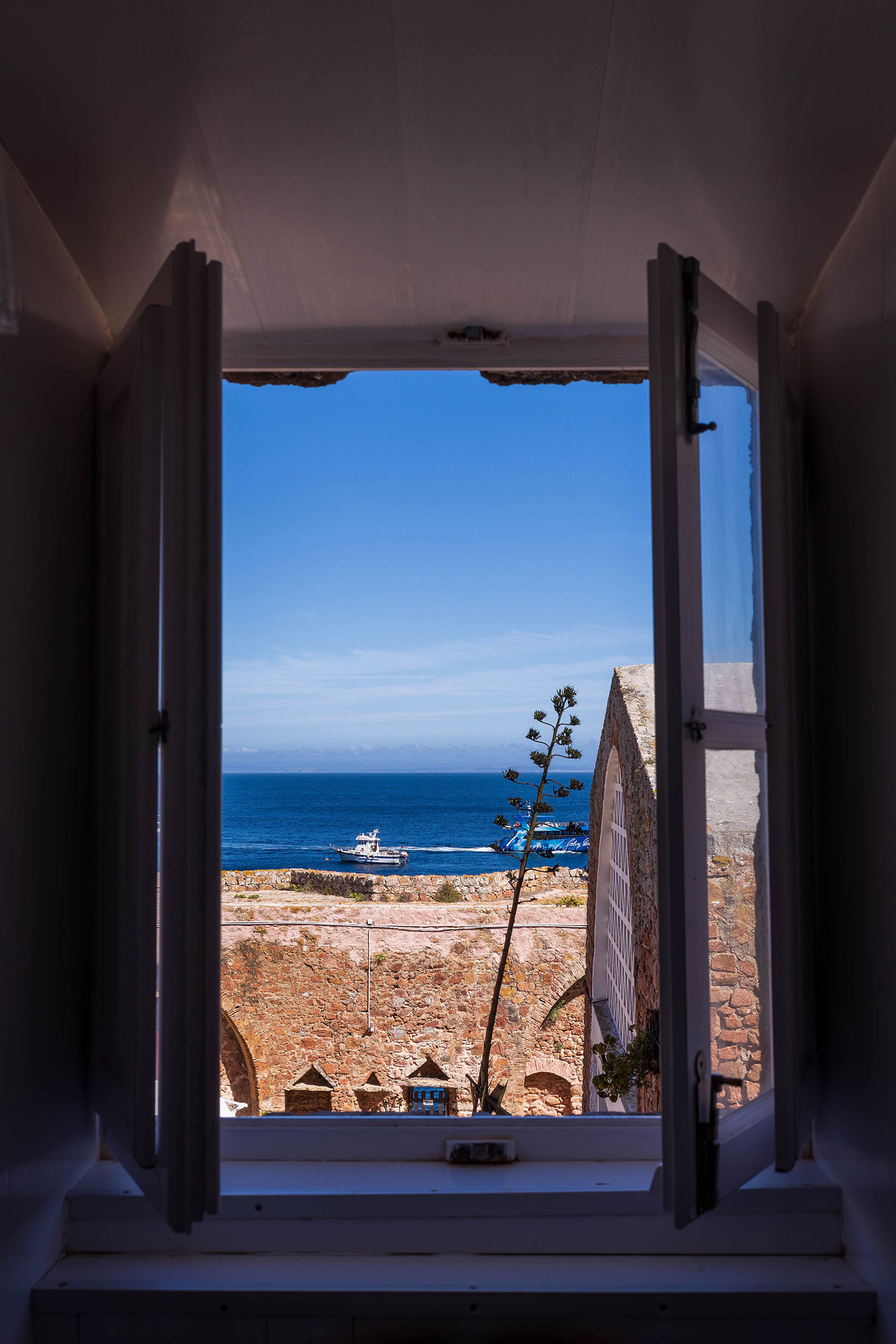
5. Ericeira
Welcome to the surfing capital of Europe. Ericeira is surrounded by plenty of surfable and adorable beaches, some of them classified as being part of the World Surfing Reserve for their especially good waves and swell.
The former fishing village itself transformed into a very charming town with a picturesque centre that managed to retain an authentic character. Traditional white houses with blue accents line cobbled streets and narrow alleys which invite for photography, wonderful strolls and vibes. The historic centre extends directly into the ocean. The seafront streets are perfect locations for Atlantic views and photography – including sunsets of course, for example overlooking the city beach “Praia dos Pescadores”.
Ericeira is dotted with surf schools, yoga studios, infrastructure for digital nomads, laid-back cafés and excellent restaurants to easily fill a few days apart from your photography.
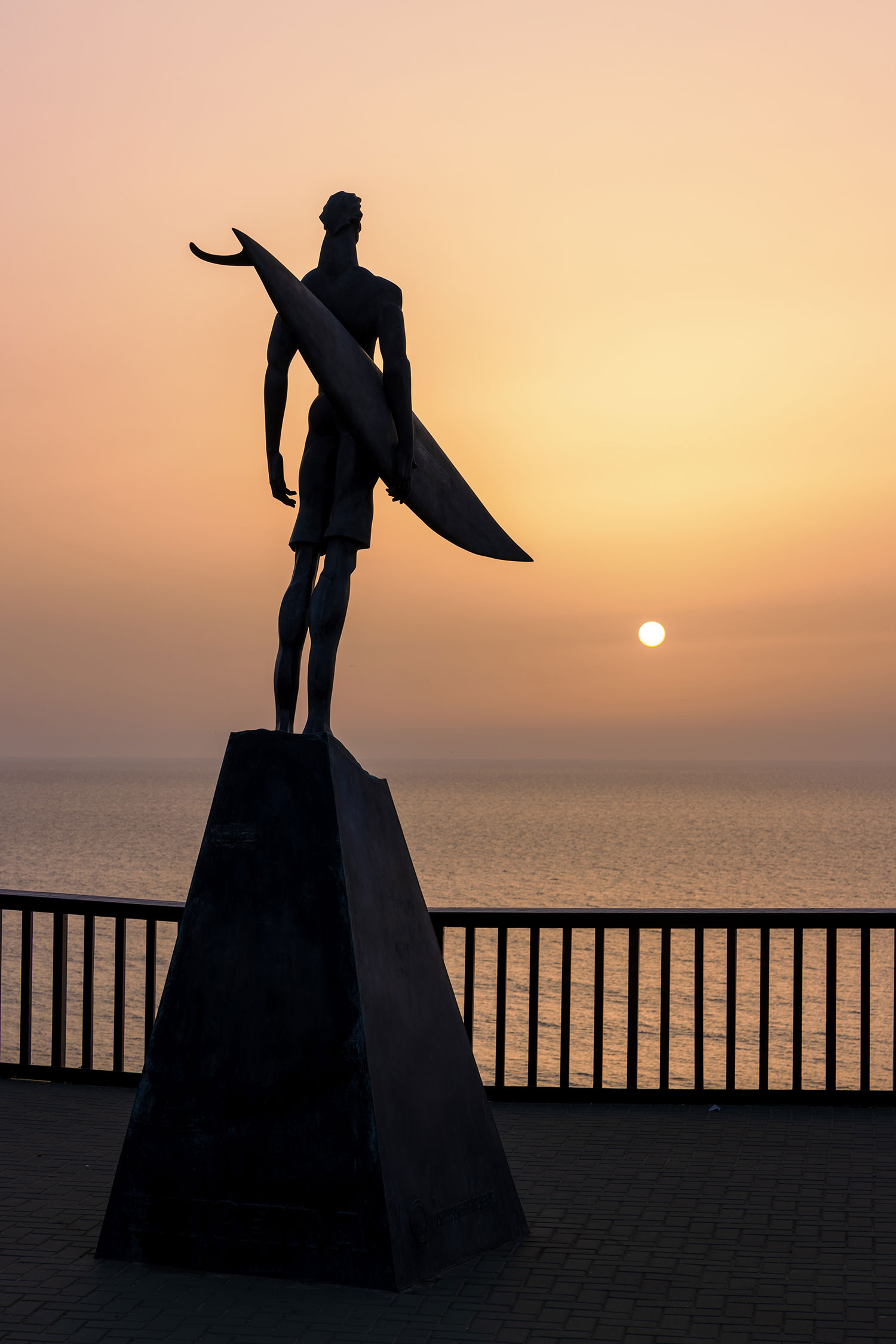
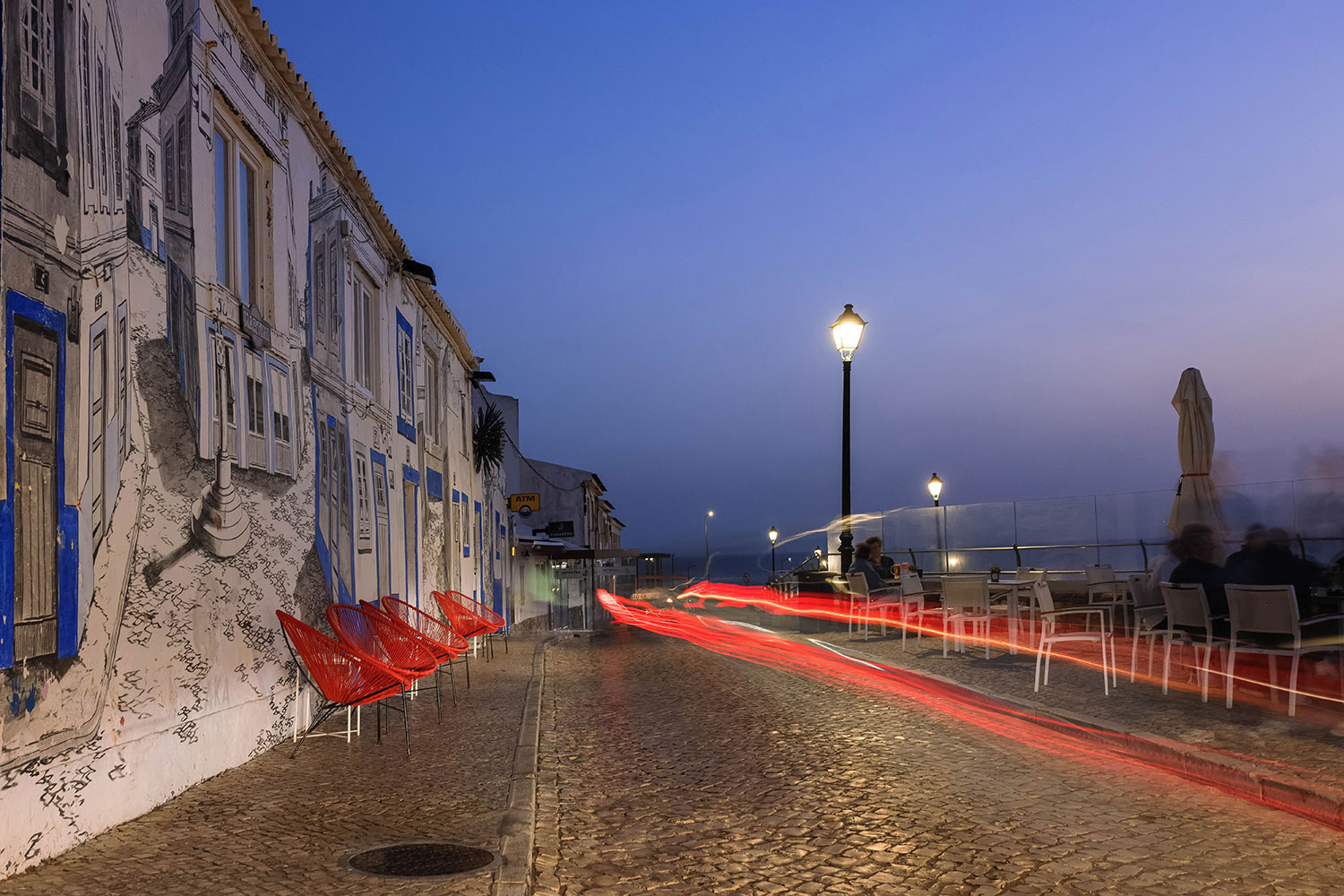
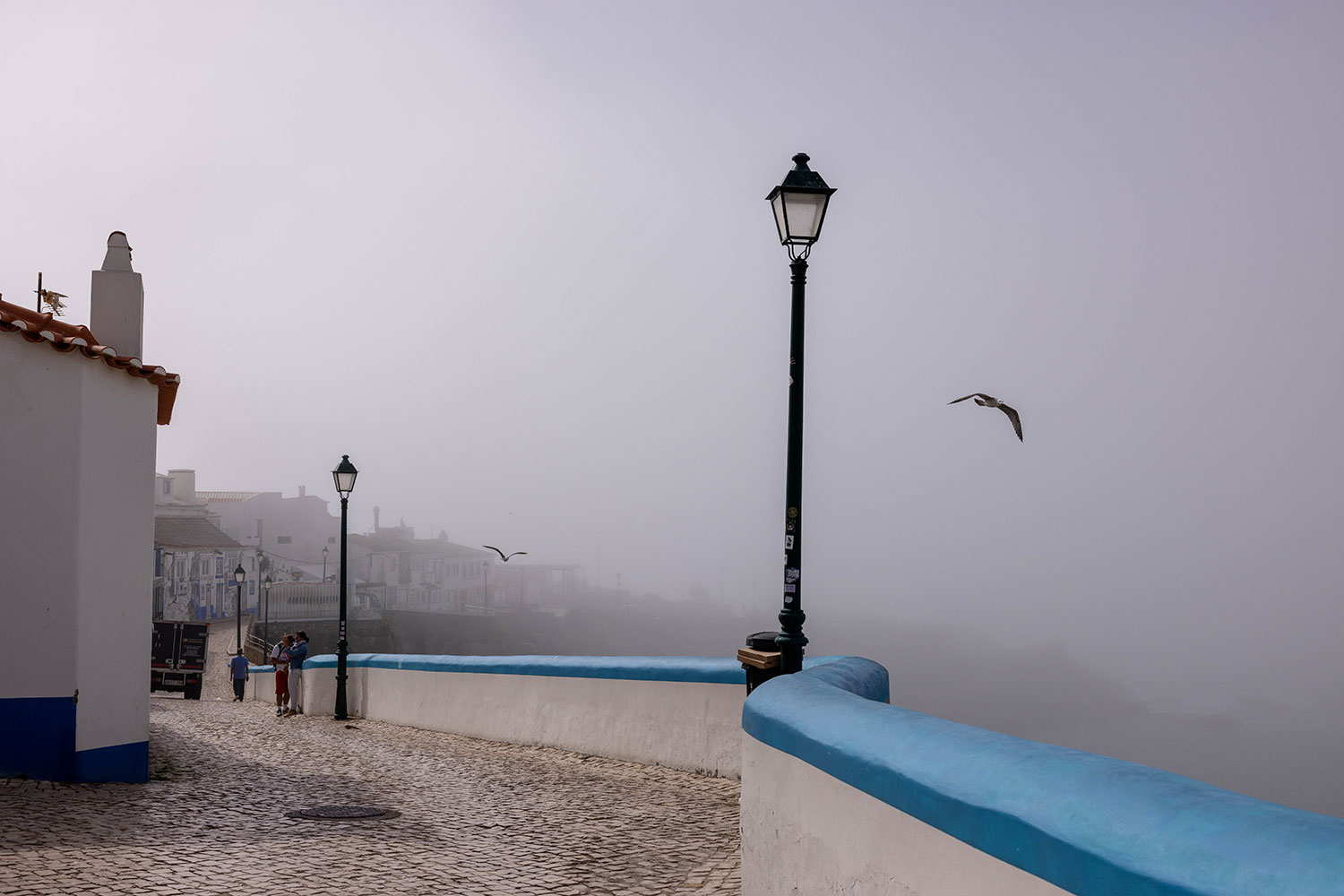
6. Azenhas do Mar
Perched on a cliff lays a little seaside village called Azhenas do Mar which translates into“Watermills of the Sea”. It is a picture postcard location, especially for sunset and blue hour when the village lights will sparkle away. But even in daylight you will get some stunning imagery here with the striking contrast of the whitewashed, terracotta-roofed houses melting down the rocks and a seawater pool at its feet as a photographers’ bonus. Best views are from Miradouro das Azenhas do Mar.
Pay attention to the details: there is another coastal village further south that, for some unknown reason that cannot be connected to the fact that Portugal is so big that they ran out of place names, is called very similar, just missing an “s”.
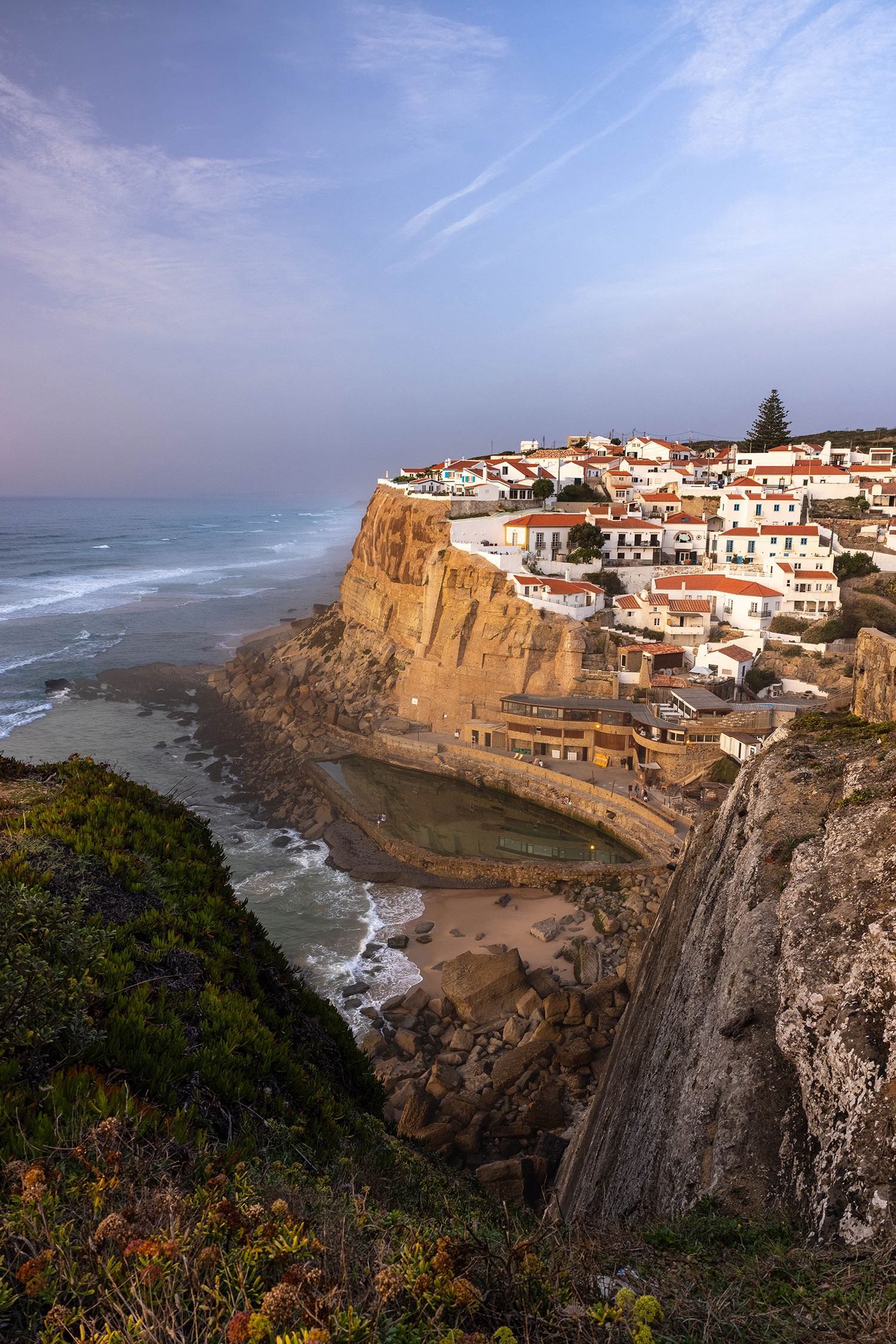

7. Panoramic trail Cabo da Roca – Praia da Aroeira – Praia da Ursa – Praia do Caneiro- Praia da Adraga
Next location isn’t actually one location but an endless number of great views on a stretch of about 2.5 km (beeline with some amount of altitude difference) – lucky you! Starting at Cabo da Roca, the most western point of mainland Europe that sits 140m high above the ocean, you will find a panoramic hiking trail to reach some of the most remote beaches, rugged cliffs and dramatic views of the Portuguese coast. Prepare for a couple of hours hike.
While the parking of Cabo da Roca will most likely be busy with bus loads of tourists, the trail will reduce their numbers quickly. It is not necessarily a Sunday school picnic. You are seriously out in nature on a proper footpath with some steep stretches and a lot of rocks to hobble over. You can avoid the steepest bits if you just stay on top of the cliffs and have great views from there instead of climbing down to the beach coves.
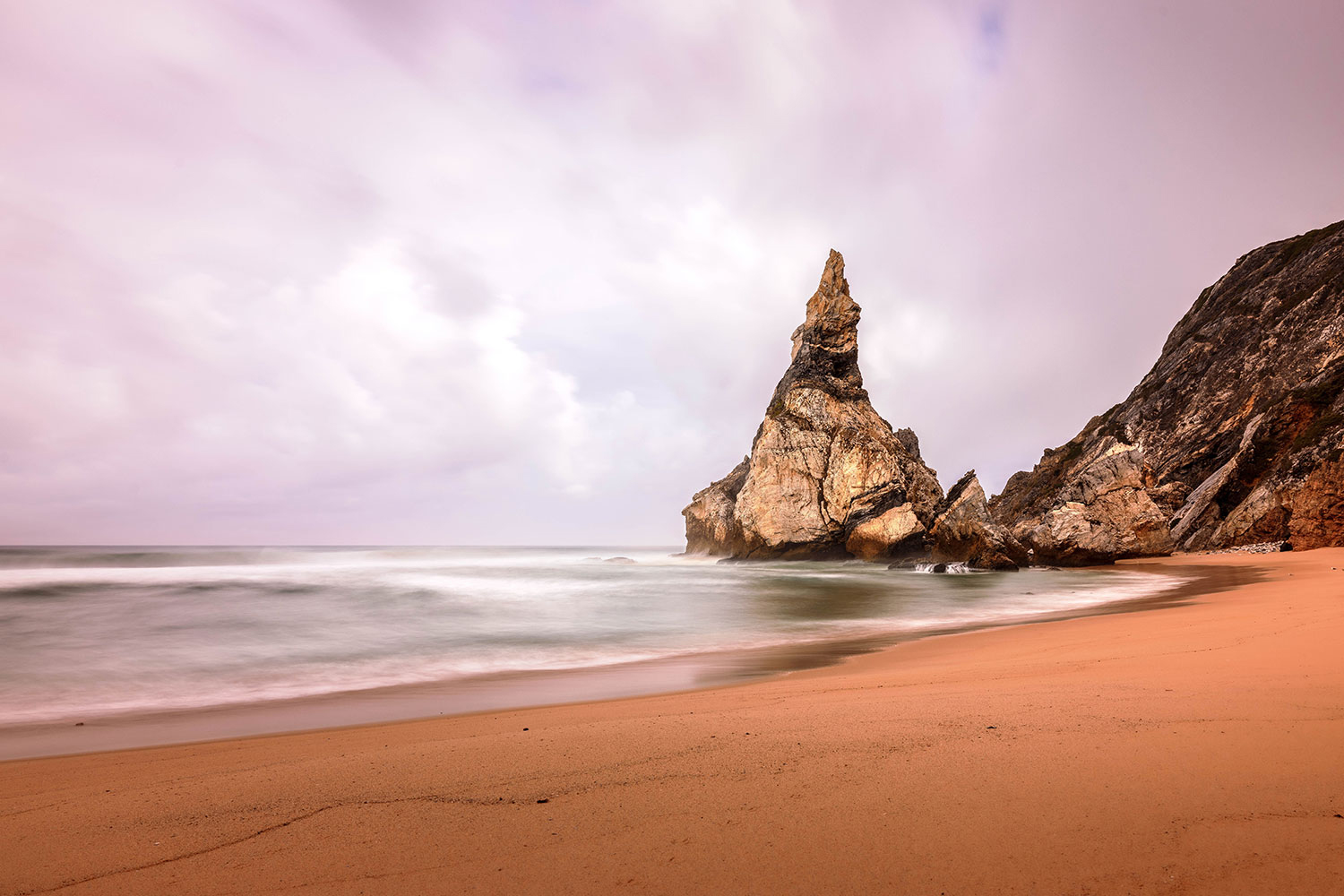
The trail is sign-posted, but the thing is: I was told that it is called “PR7”, and there is a PR7, but I don’t think it is the panoramic trail following the cliffs. The trail also does not come up in Googlemaps. You will have to find any of the footpaths that are leaving the paved Estrada do Cabo da Roca in northern direction. My favourite cove was Praia da Ursa, but there are plenty of great photography locations all the way to Praia da Adraga where you will also find road access, parking and a restaurant again.
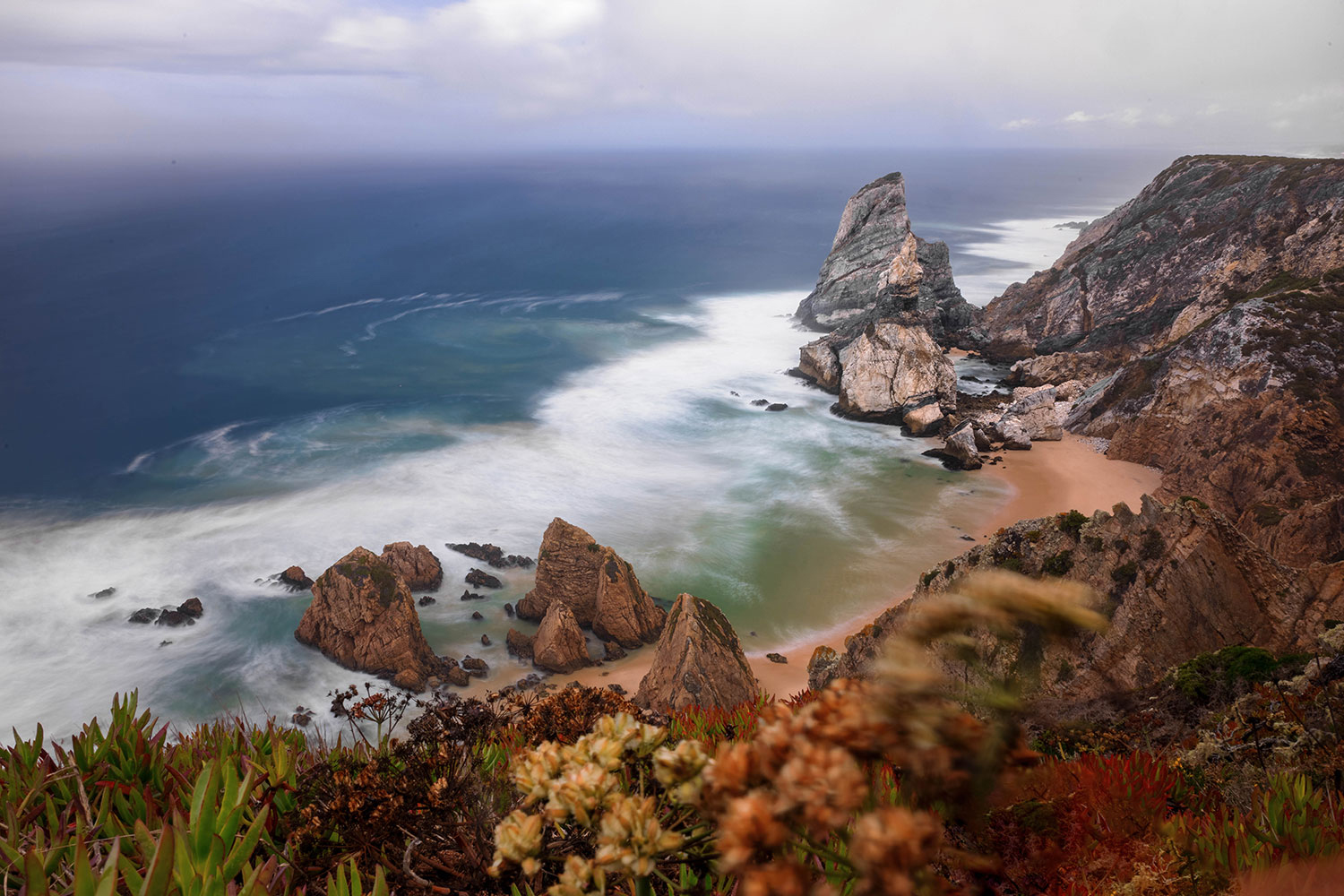
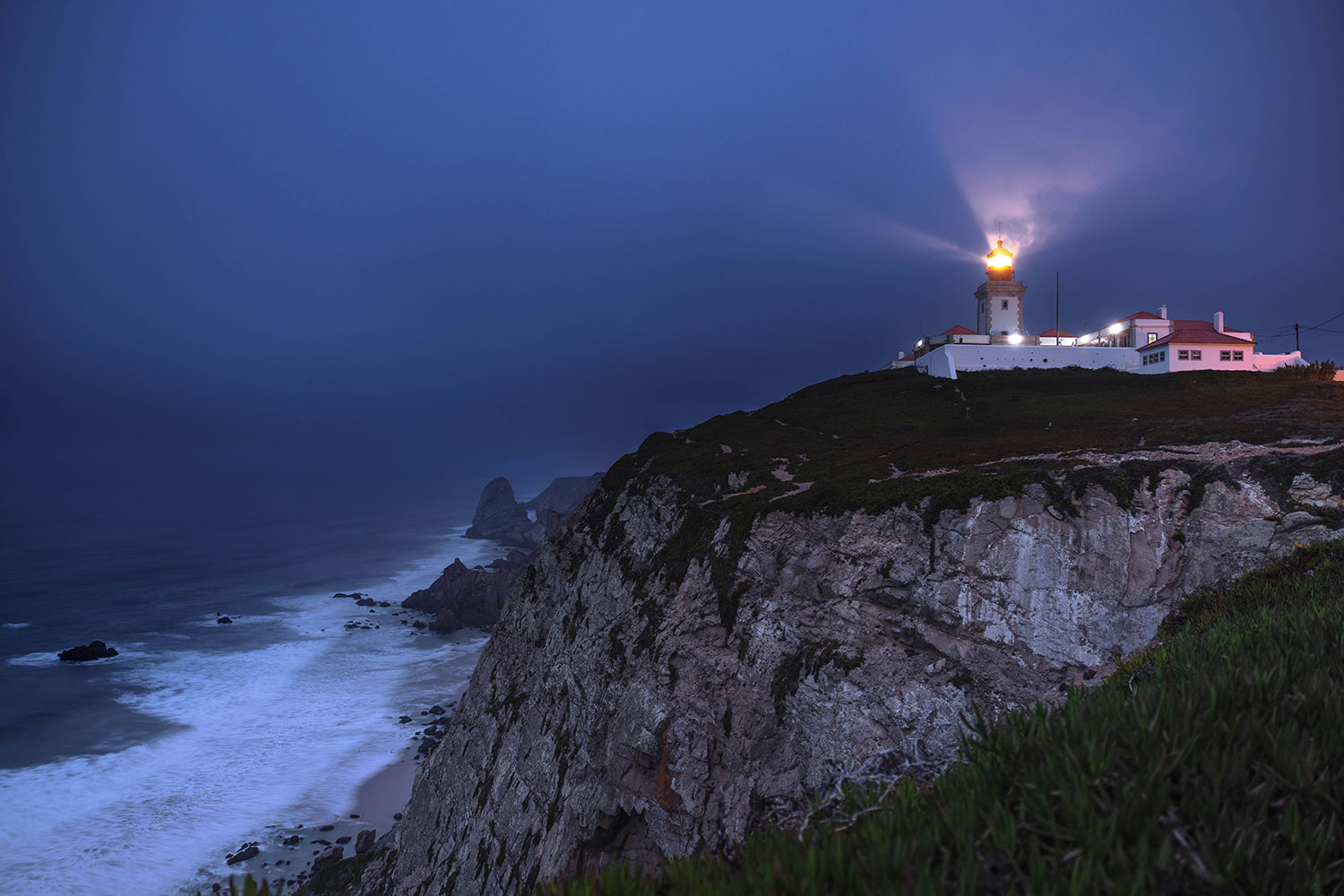
8. Praia do Louriçal
Just in the other direction of Cabo da Roca are more tiny coves with stunning rock formations. Praia do Louriçal earned its own mention in this location guide for two reasons. First, to let you know what you need to know about the access: it is a rock climbing area and you will need to be safe using stretches of rope up and down steep rocks and slippery sand slopes. I photographed this location both at sunset and sunrise, which I especially have to warn against for the danger of getting up and down the cliffs in the dark. Make sure you will manage safely and don’t forget proper headlamps! Access is from the Cabo da Roca parking.
The second reason this beach got its own solo mentioning is that it is just breathtakingly beautiful. Don’t you agree?
Some of the photographs shown here are HDRs!
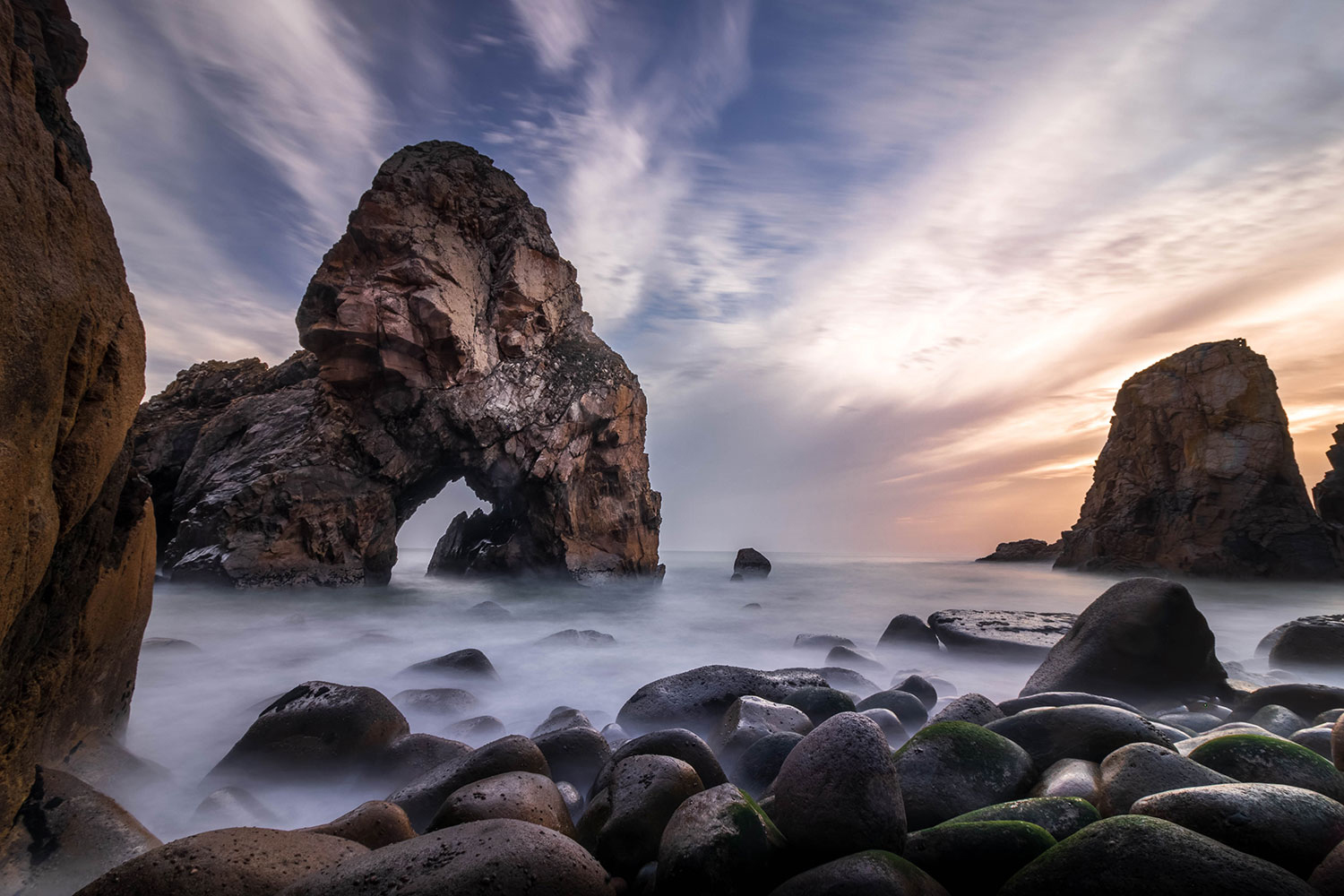
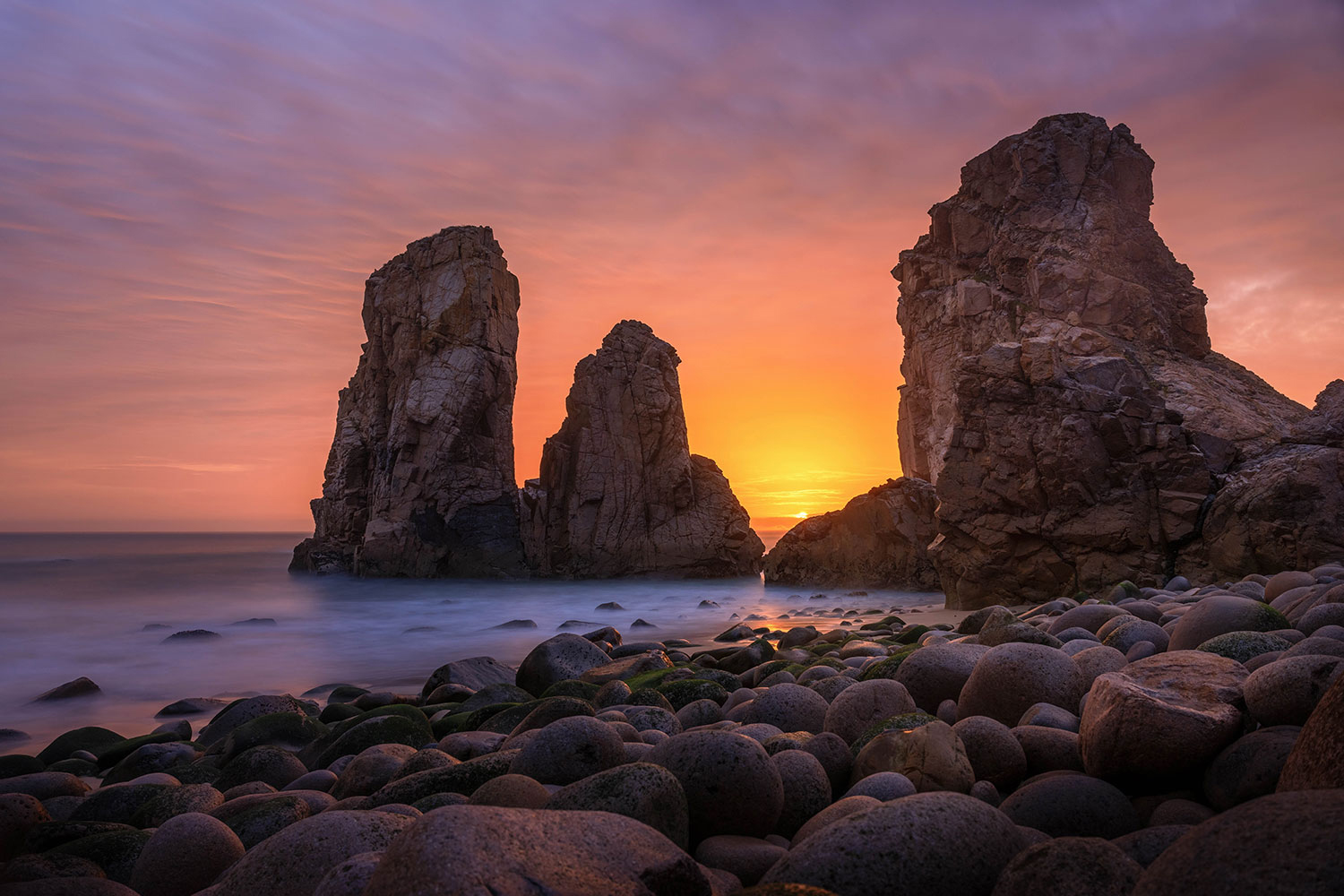
Additional Reading + Portugal Planning: A Photographer’s Guide to Lisbon
09. Carrasqueira
On the edge of the Sado Estuary lies the small fishing village of Carrasqueira. It’s fishermen’s quay, the cais palafitico, is a great deal of interconnected piers made of a multitude of wooden sticks, boards and planks that remind me of the chopstick game “spillikins” or “Mikado”: if you would try to pull one stick out, the whole thing could crumble and disappear into nothing. It still serves local fishermen, though, to access their boats. Take care to respect their daily business and private property.
It’s an amazing location if the conditions are right. In a perfect world, that would mean: the right timing of a beautiful sky – a somehow clear weather with some clouds – preferably at sunset of course, no wind and – this is the most important – high tide for those beautiful calm pictures with gorgeous reflections in the water.
Well, I visited several times and did not have anything close to a combination of this. I managed to have a decent sunset and sunrise, precisely at low tide. I found the piers sticking out of grey masses of mud, only revealing some rubbish within.
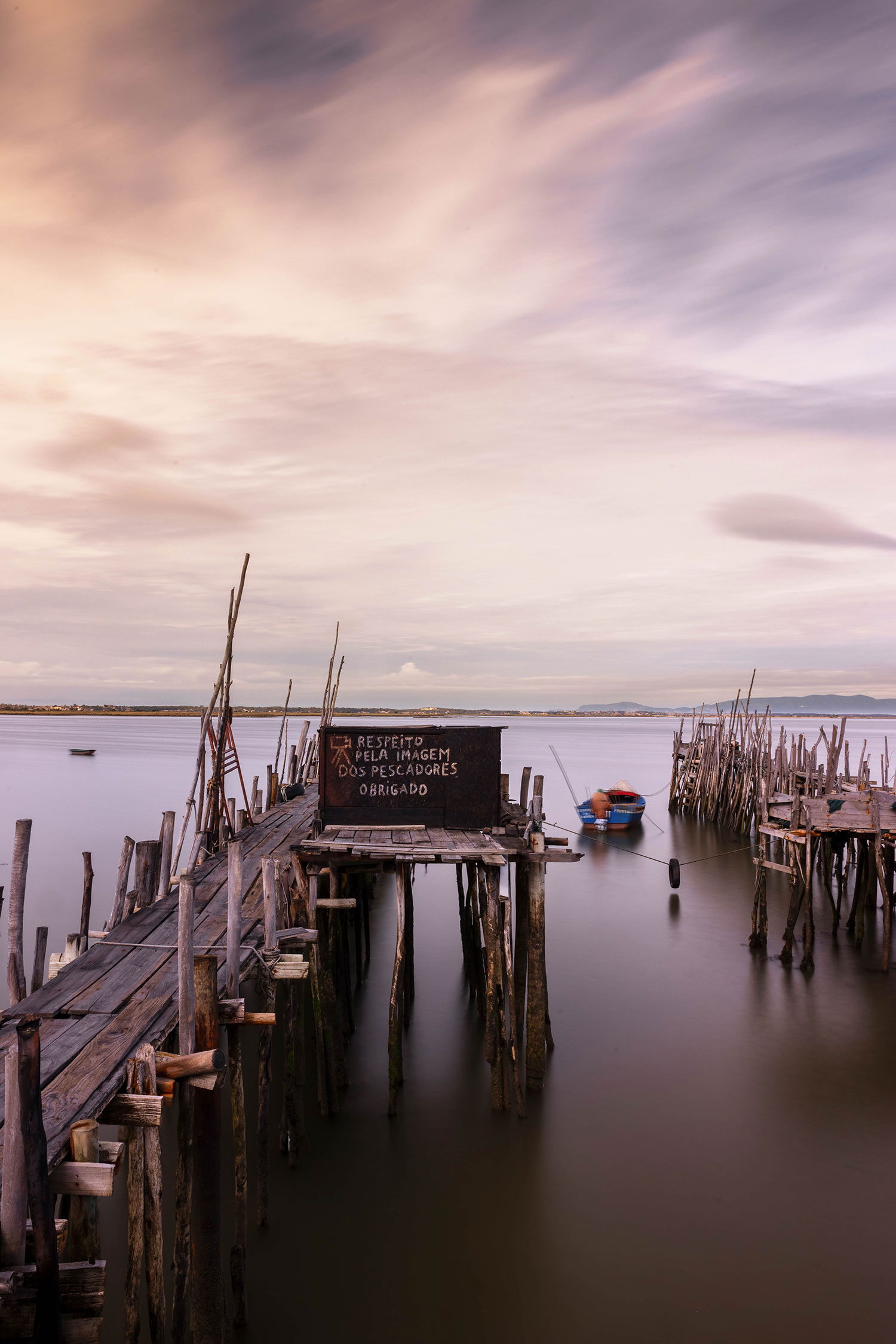
Furthermore, I had windy days, a bleaching sun, I had muddy grey skies, trying to keep my camera out of the rain showers and I had some not spectacular sunsets and sunrises.
Guess what? I still took some images. I did not get the fireworks, but yes, against all odds, it is possible to take photos in all conditions!
I began to time visits for high tide though, as that’s undeniably much better, even if I wasn’t yet rewarded with a colour explosion sunset I would have liked to see here. Come and try me!
It is advisable to bring a tripod, even though the wooden walkways shake as soon as you or somebody else is moving along. For long-exposures, filters will be handy. I am also using a strong torch sometimes to illuminate foregrounds or a dark pullover to shade some existing lights. In case I cannot get the too bright sky and comparably dark piers right in one shot, I like to take several exposures to be able have more options for editing and maybe even combine them to HDRs later. If you mind mosquitoes, make sure to be well-prepared!
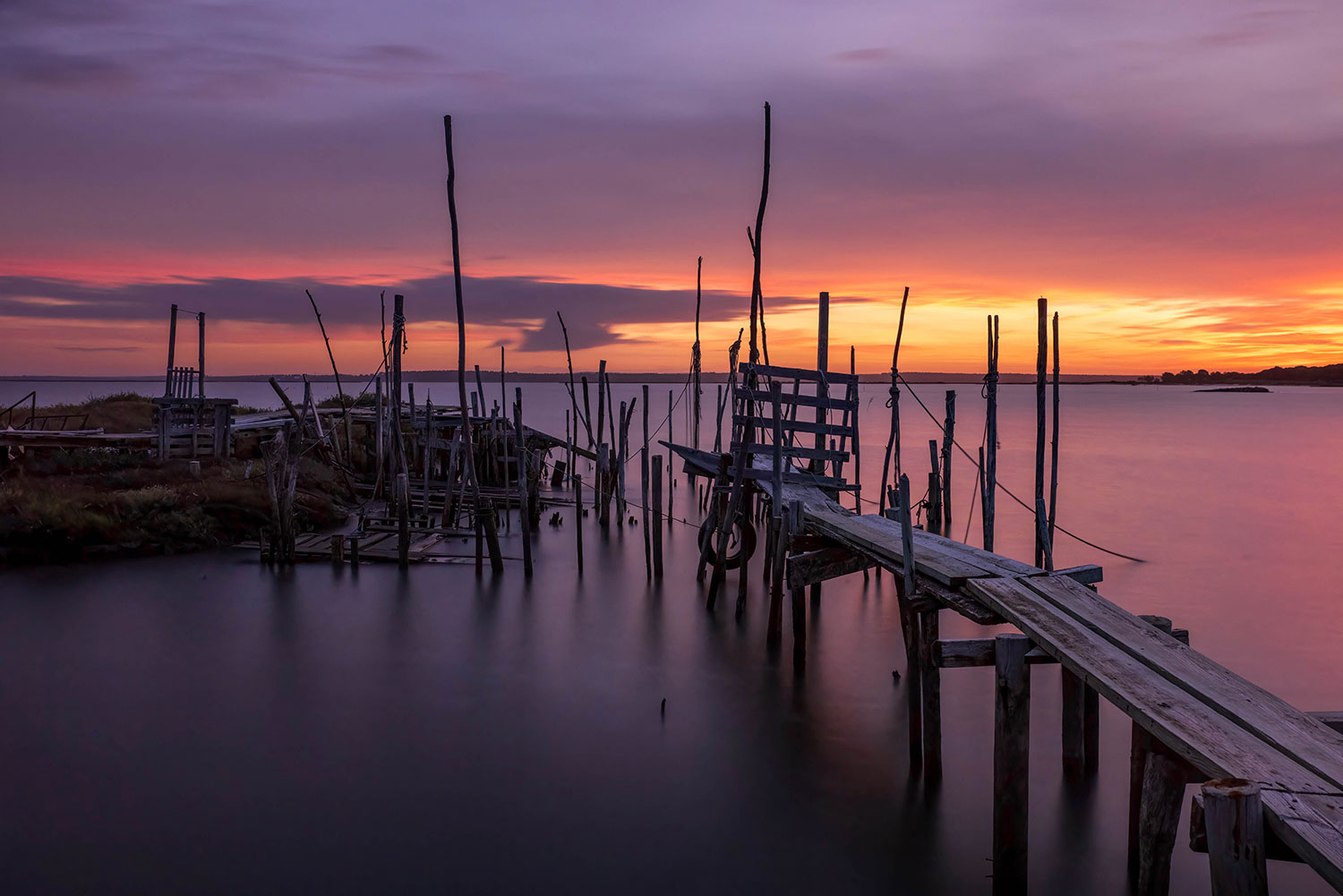
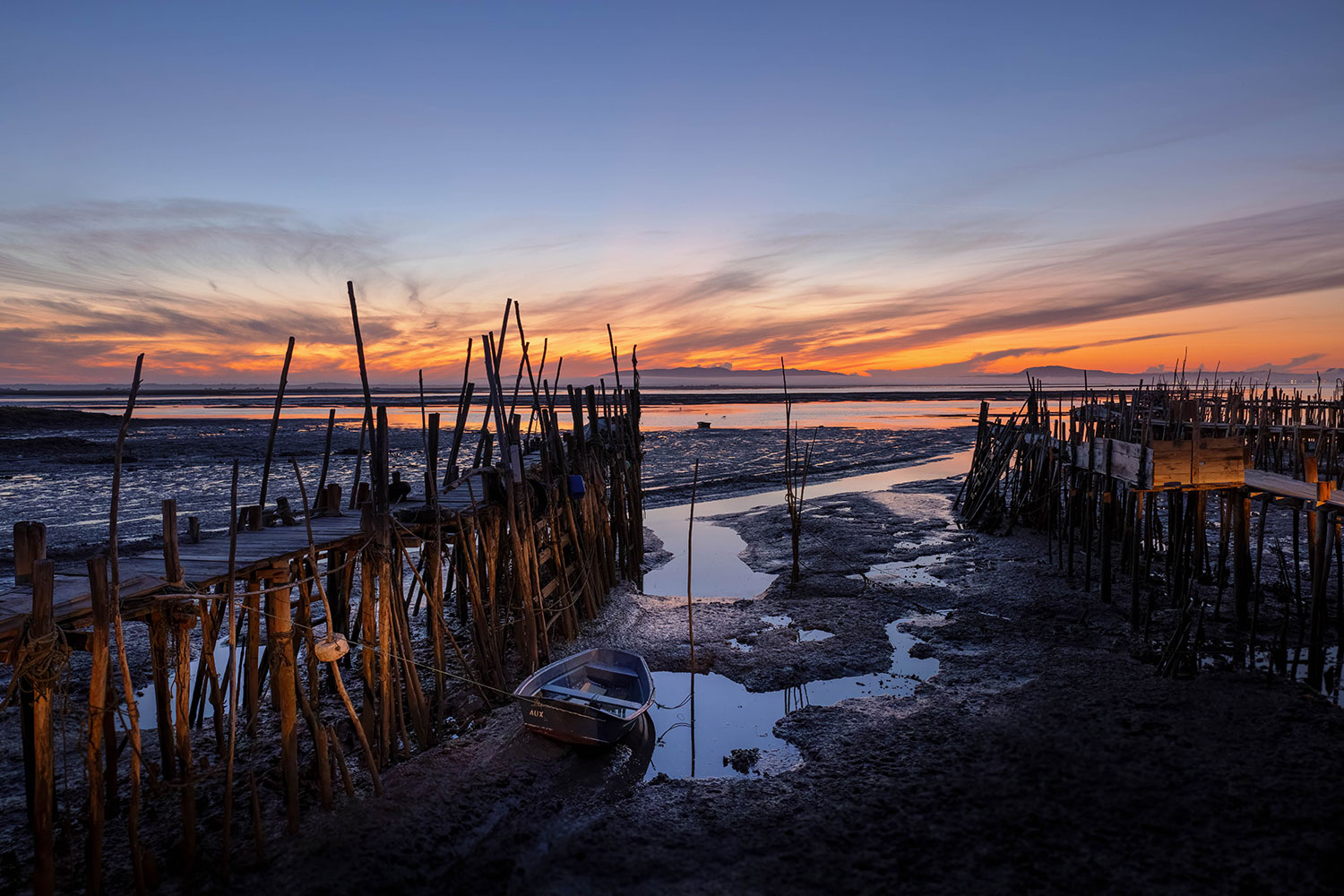
10. Vila Nova de Milfontes
Vila Nova de Milfontes is a pleasant and well-kept town with a Moorish heritage, a decent number of cobblestone streets and whitewashed houses with colourful accents. Besides photographing the centre, head out for the city beach Praia do Franquia or on the bridge over Mira River for nice views of the town. You can get reflections on the calm and flat water around low tide when there is no wind.
Don’t miss Praia do Farol for something special: a geological rock structure that looks like a net with numerous little water pools covers this beach. It is only visible with the decreasing water level. So, now here is the good news if you happened to have ended up at the previous spot and found out that there is no water around sunset time. That is perfect! Because you will need low tide for this location, and it is most beautiful at sunset again!
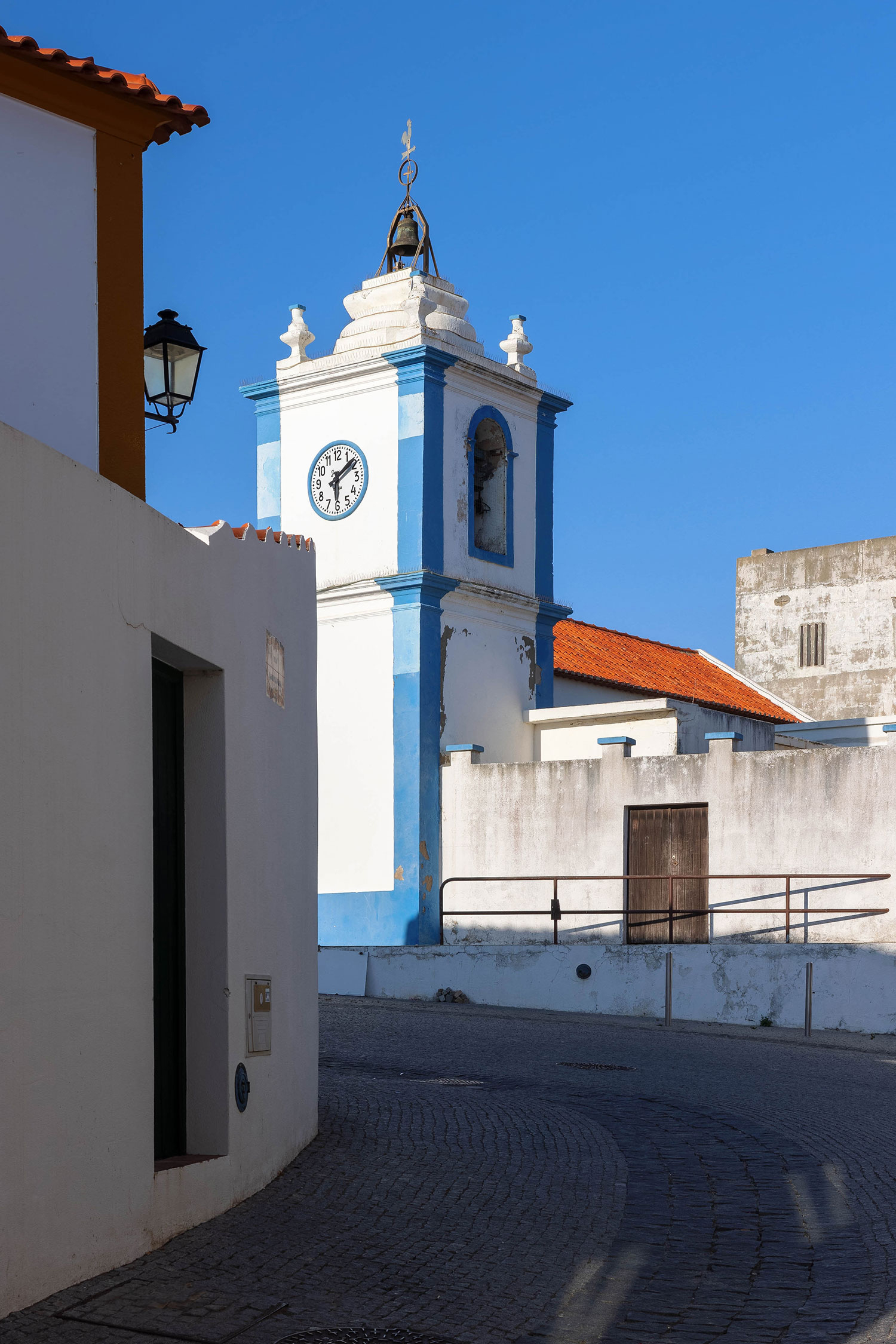
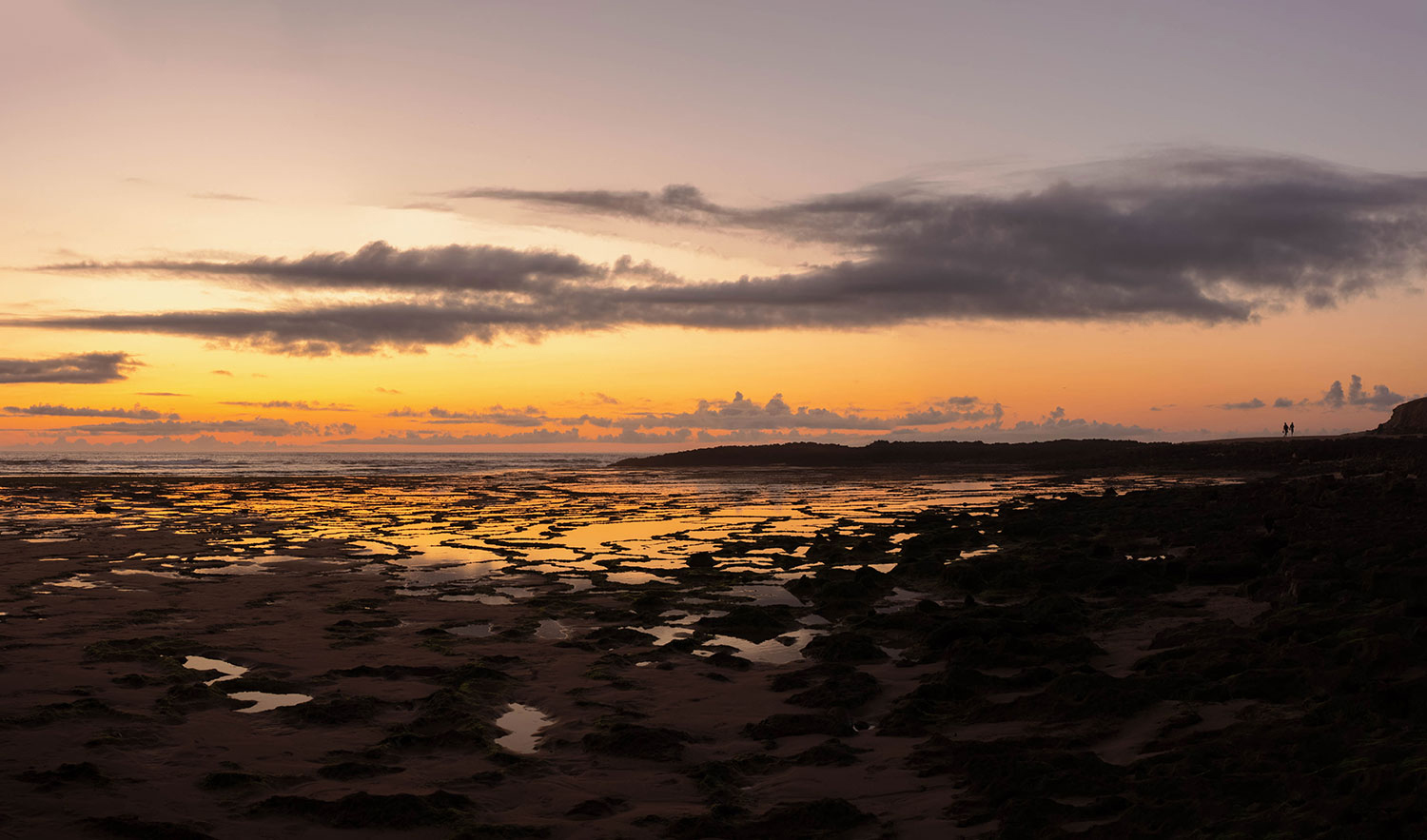
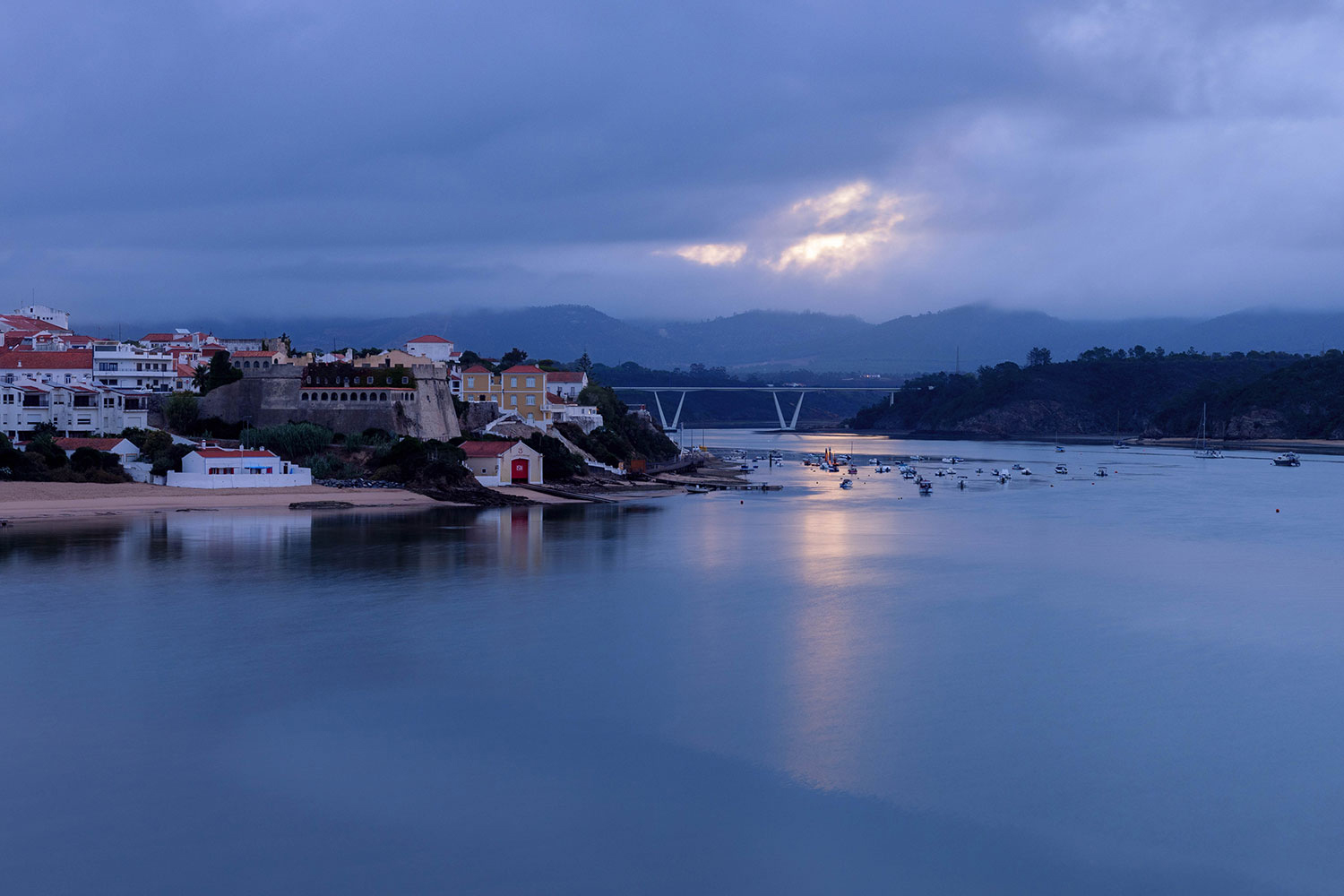
Last but not least, there is a chance to photograph a ship’s wreck should you fancy that. The Dutch tugboat Klemens sank in 1996 and washed up at Praia do Patacho. Best around mid-tide.
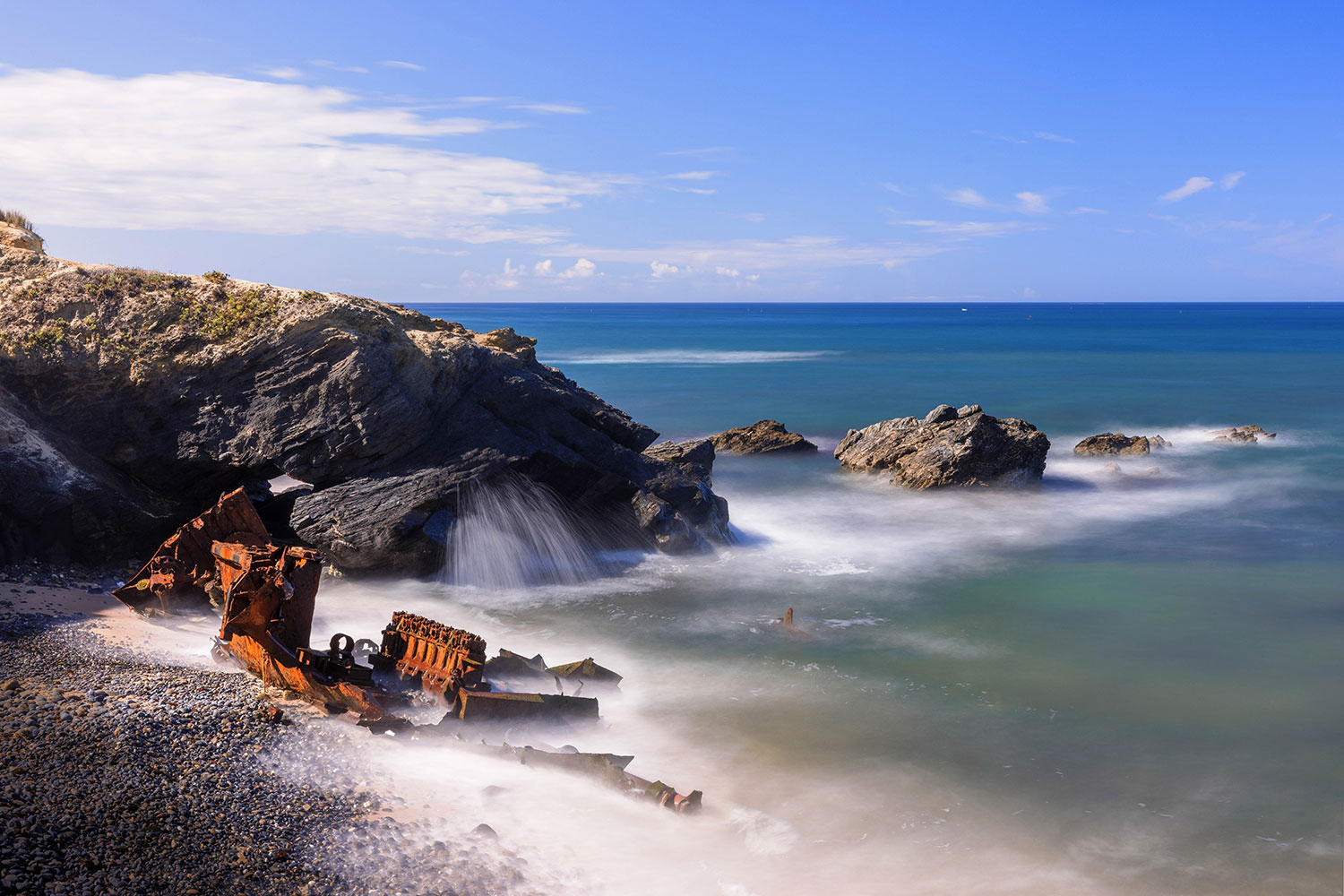
Your Map to Photography Locations along Portugal’s Atlantic Coast:
Locations noted by Julie within this guide have been mapped on the Google Map below. You’re welcome to click and open it on your device!
Announcement – Hip, hip hooray!
There’s a new type of camera club and you’re welcome to join! ‘The Travel Photography Club’ is a members-only space filled with inspiring conversations, exclusive content, itineraries, resources and monthly creative challenges aimed to boost your photographic skills and professional opportunities.
A club for beginners and professionals alike: Elevating your creative skills, settings knowledge, and editing workflow via challenges, exclusive resources + community discussions.
An online space to connect, learn and grow as a photographer. “There is so much in there – inspiration, creative challenges, resources, travel itineraries, industry tips, editing help and more. I have been looking for a place like this where I can grow as a photographer with an awesome mentor, Lisa Michele Burns, and a super supportive and helpful international community. I’m loving it!” – Sue, Australia.
Travel and landscape photographer from Australia who is far more comfortable in a pair of flippers than heels! Having worked for publications such as Lonely Planet, Wanderlust and the Sunday Times, Lisa founded The Wandering Lens to share destination guides to the worlds most photogenic places and outdoor experiences.


